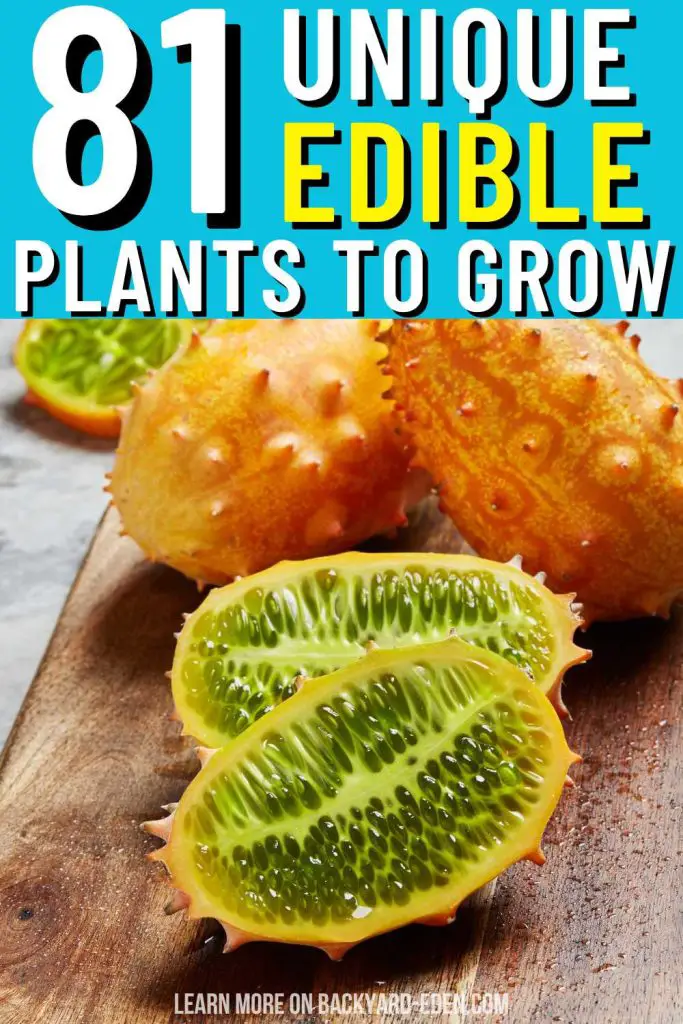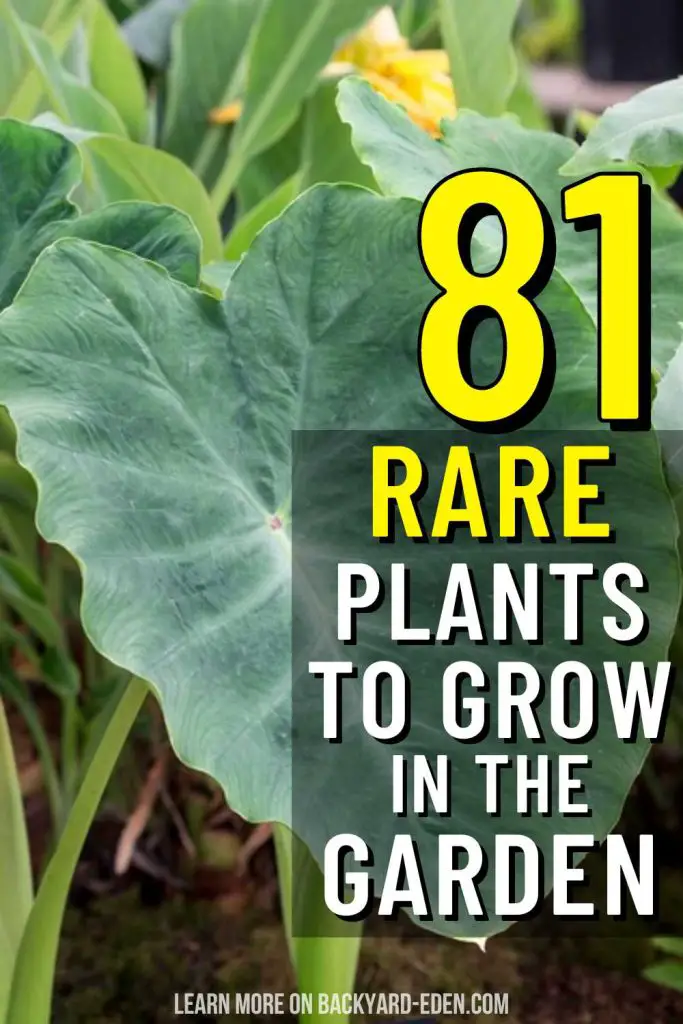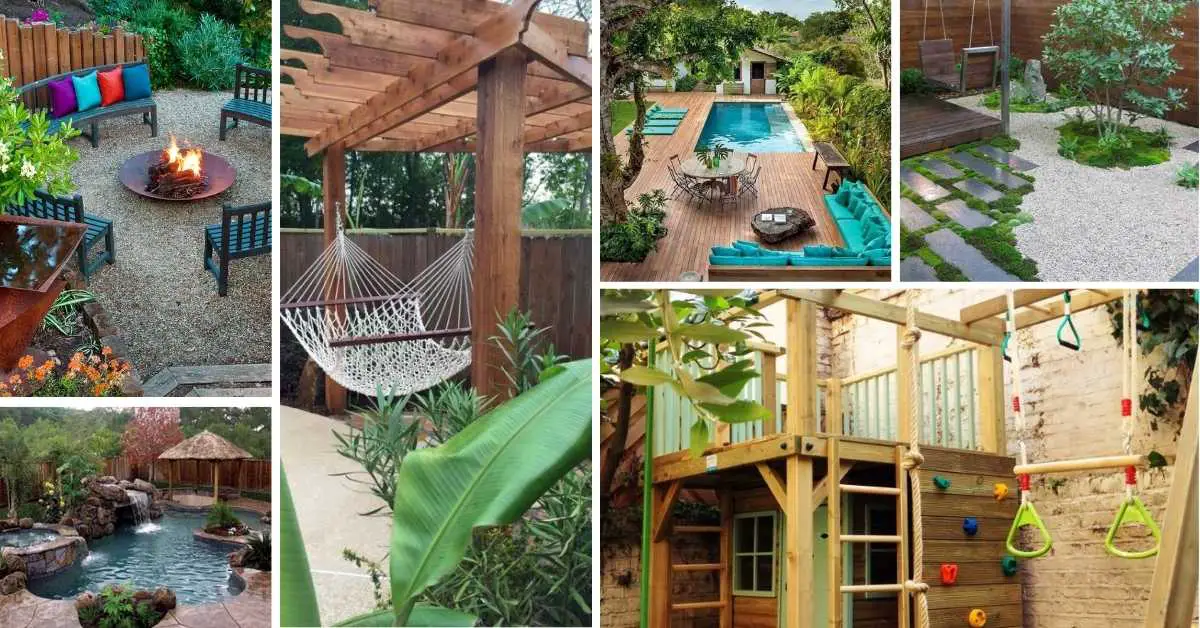Welcome to a fun world of gardening where you can grow all different kinds of special plants that you can eat! Whether you’re just starting or you’ve been gardening for a while and want to try something new, this post is for you.
Imagine walking into your garden and seeing all sorts of colors, shapes, and tastes. It’s not just about growing food; it’s about going on an adventure in your backyard, learning about plants from around the world, and helping the environment.
Get ready to be inspired and maybe even a bit surprised as we explore lots of unique plants that can make your garden and meals exciting.
Let’s start this journey together and see how amazing your garden can become.
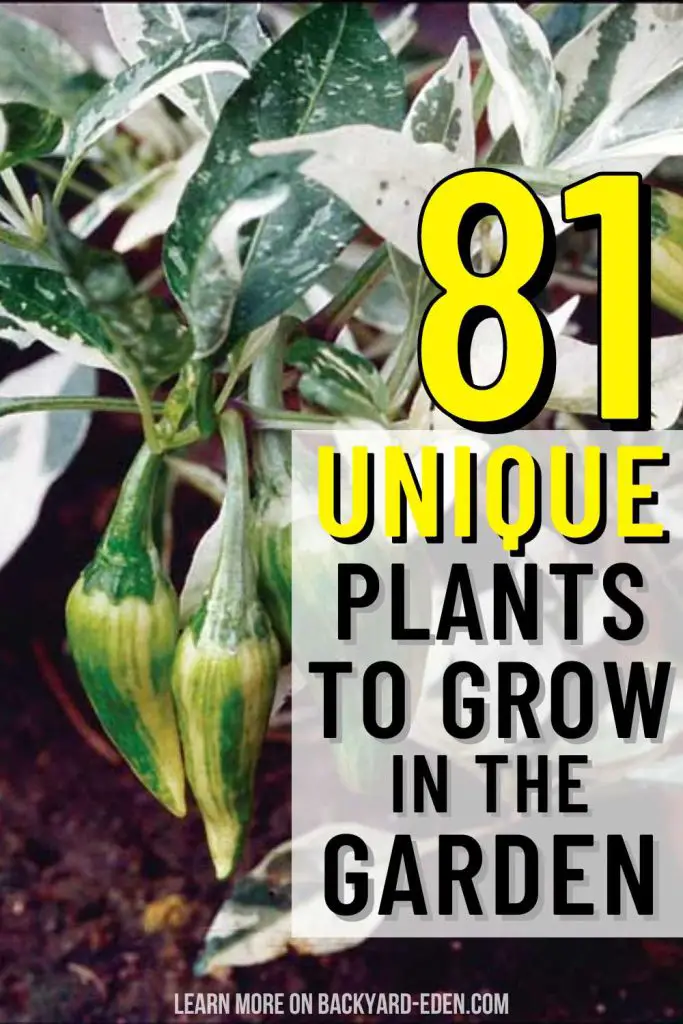
This post may contain affiliate links. Read our full disclosure here.
What Are Some Unique Edible Plants I Can Grow in My Garden?
Growing unique edible plants in your garden can transform it into a vibrant and flavorful sanctuary. Among the myriad of options, consider starting with purple carrots, known for their antioxidant-rich, deep purple hue, or Romanesco broccoli, which offers a visually stunning geometric pattern and a nuttier flavor than traditional broccoli.
Kiwano (horned melon) provides a refreshing cucumber-lime taste and an eye-catching appearance. Oca tubers are another excellent choice, offering a variety of colors and a sweet, tangy flavor reminiscent of citrus.
These plants not only add diversity to your garden but also introduce new flavors and textures to your kitchen.
How Do I Start Growing Unique Edible Plants?
To embark on your journey of growing unique edible plants, begin by researching plants that intrigue you and are suitable for your climate. Purchase quality seeds or seedlings from reputable nurseries or online sources.
Prepare your garden by enriching the soil with compost to improve fertility and drainage. Consider starting seeds indoors if your growing season is short, and be patient as some unique plants may have longer germination times.
Mark planting and harvest times on your calendar to keep track of your garden’s progress. Starting small and gradually expanding your garden as you gain confidence and experience is key.
1. Oca (Oxalis tuberosa)
Oca is a tuberous plant native to the Andes, producing brightly colored tubers that resemble small potatoes. They have a tangy, lemony flavor and can be eaten raw or cooked. Oca is rich in carbohydrates and vitamin C.
It’s ideal for gardeners looking to add a unique and nutritious root vegetable to their garden. The plant is relatively easy to grow, requiring similar conditions to potatoes. It’s also resistant to many pests and diseases.
- USDA Hardiness Zone: 7-11
- Daylight Requirements: Full sun to partial shade
- Soil Needs: Well-drained, fertile soil with a pH of 6.0-7.5
- Mature Size: Tubers grow up to 2-3 inches long
- Container Growing: Yes, in large pots
- Growing Season: Plant in spring, harvest in late autumn
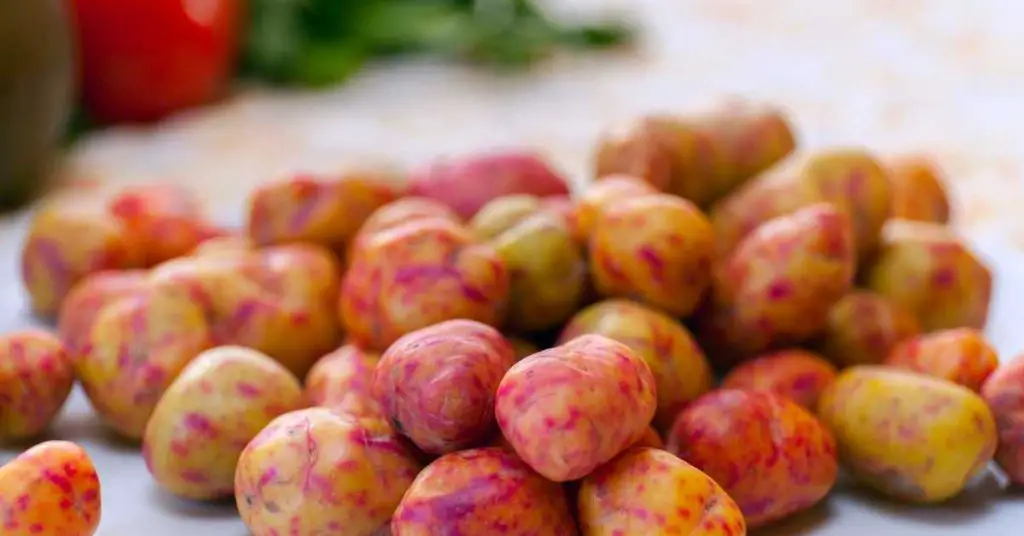
2. Malabar Spinach (Basella alba)
Malabar spinach is a fast-growing, vining plant known for its edible, fleshy leaves. It’s not a true spinach but offers a similar flavor and texture. This plant thrives in hot, humid conditions where traditional spinach might fail.
It’s a great source of vitamins A and C, iron, and calcium. Malabar spinach can be used in salads, soups, and stir-fries. Its ornamental value, with deep green leaves and red stems, makes it an attractive addition to any garden.
- USDA Hardiness Zone: 10-11, grown as an annual in cooler climates
- Daylight Requirements: Full sun to partial shade
- Soil Needs: Rich, fertile, well-drained soil
- Mature Size: Vines can grow over 10 feet long
- Container Growing: Yes
- Growing Season: Warm months
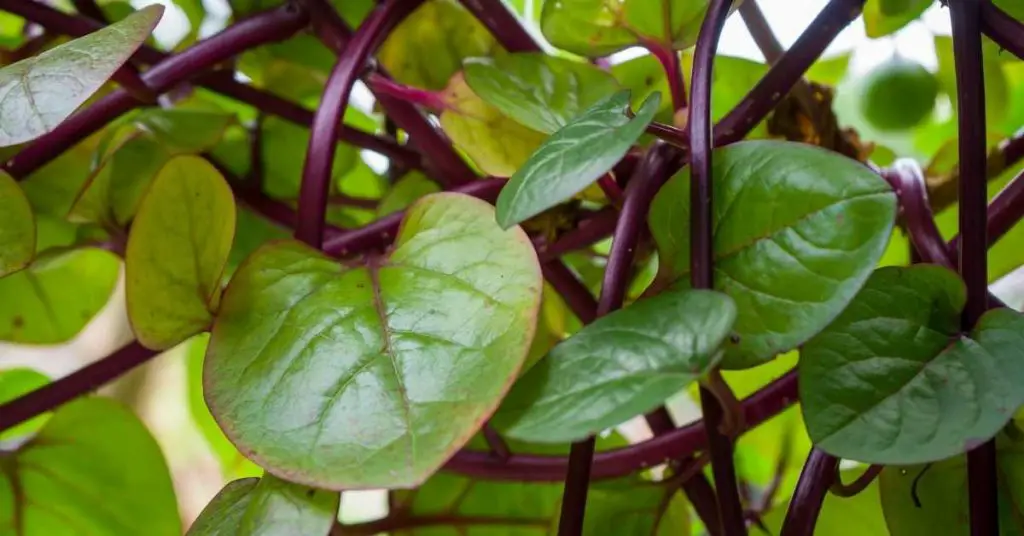
3. Romanesco Broccoli
Romanesco broccoli is known for its striking geometric patterns and vibrant green color. It’s a great source of vitamin C, vitamin K, and dietary fiber. The flavor is more delicate and nuttier than traditional broccoli. It’s perfect for raw eating, steaming, or roasting.
Romanesco adds a visually stunning element to any garden and is a conversation starter due to its unique appearance. It requires similar growing conditions to other brassicas and is relatively easy to cultivate.
- USDA Hardiness Zone: 3-10
- Daylight Requirements: Full sun
- Soil Needs: Well-drained, fertile soil with a pH of 6.0-7.0
- Mature Size: 6-8 inches tall and wide per head
- Container Growing: Yes, in deep containers
- Growing Season: Cool weather crop, plant in early spring or late summer
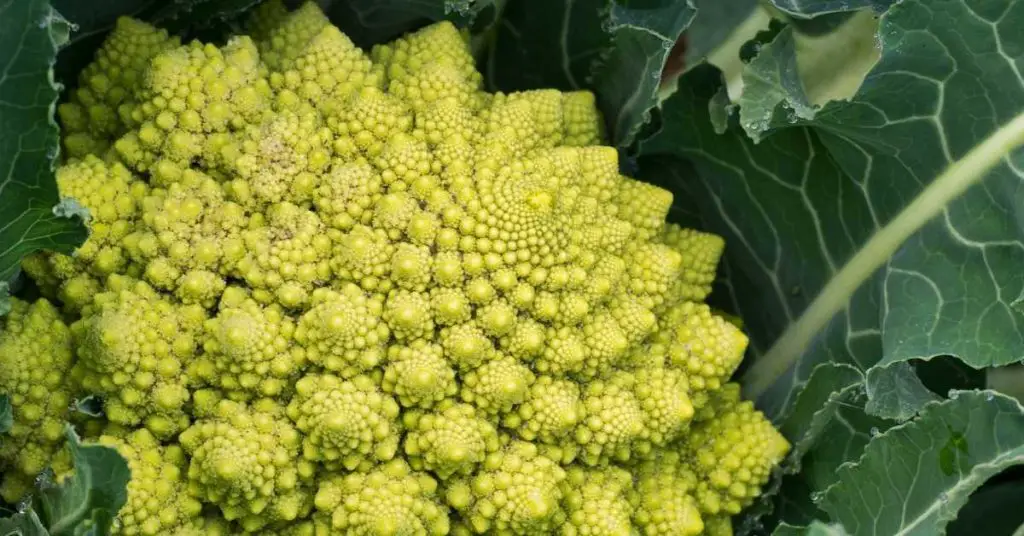
4. Tiger Nuts (Cyperus esculentus)
Tiger nuts, also known as chufa, are not actually nuts but tubers. They have a sweet, nutty flavor and are highly nutritious, rich in fiber, vitamins, and minerals. Tiger nuts are a staple in Spanish horchata and can be eaten raw, roasted, or ground into flour.
They’re ideal for those interested in growing novel and nutritious root crops. Tiger nuts prefer warm climates and sandy soils but can be grown in containers in cooler regions.
- USDA Hardiness Zone: 9-11
- Daylight Requirements: Full sun
- Soil Needs: Well-drained, sandy soil
- Mature Size: Up to 3 feet tall
- Container Growing: Yes
- Growing Season: Warm months
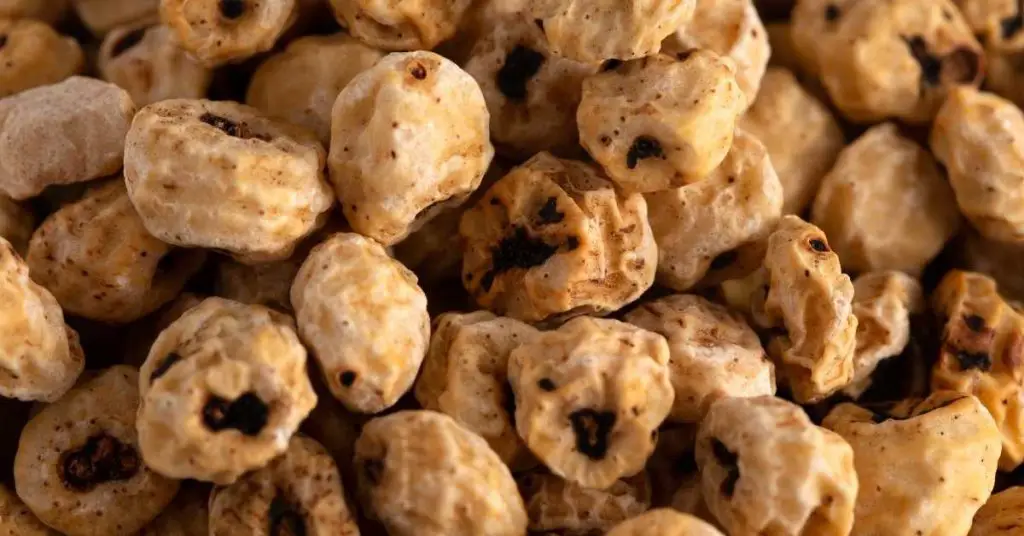
5. Cucamelon (Melothria scabra)
Cucamelons are tiny fruits that resemble miniature watermelons but taste like cucumbers with a hint of lime. They’re perfect for salads, pickling, or snacking. Cucamelons are high in vitamins and minerals, particularly vitamin C and potassium.
They are drought-resistant and pest-resistant, making them a low-maintenance choice for gardeners. Their vining nature and attractive fruit make them a charming addition to any vegetable garden.
- USDA Hardiness Zone: 7-11
- Daylight Requirements: Full sun
- Soil Needs: Fertile, well-drained soil
- Mature Size: Vines can reach over 10 feet
- Container Growing: Yes, with support for vines
- Growing Season: Warm months
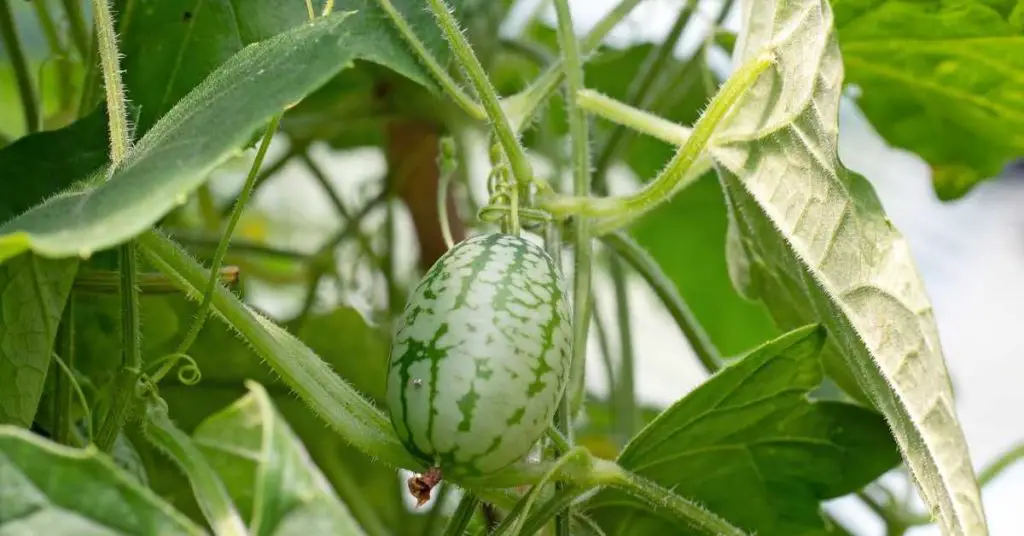
6. Chinese Red Meat Radish (Raphanus sativus)
Also known as ‘watermelon radish’, this variety is known for its vibrant pink interior and greenish-white skin. It offers a mild, slightly peppery flavor and is rich in antioxidants. Perfect for fresh eating, pickling, or adding a splash of color to salads.
This radish variety is a great choice for gardeners looking to grow something visually stunning and tasty. It requires little maintenance and can be grown in both garden beds and containers.
- USDA Hardiness Zone: 2-11
- Daylight Requirements: Full sun to partial shade
- Soil Needs: Loamy, well-drained soil
- Mature Size: Root diameter up to 4 inches
- Container Growing: Yes
- Growing Season: Plant in spring or late summer
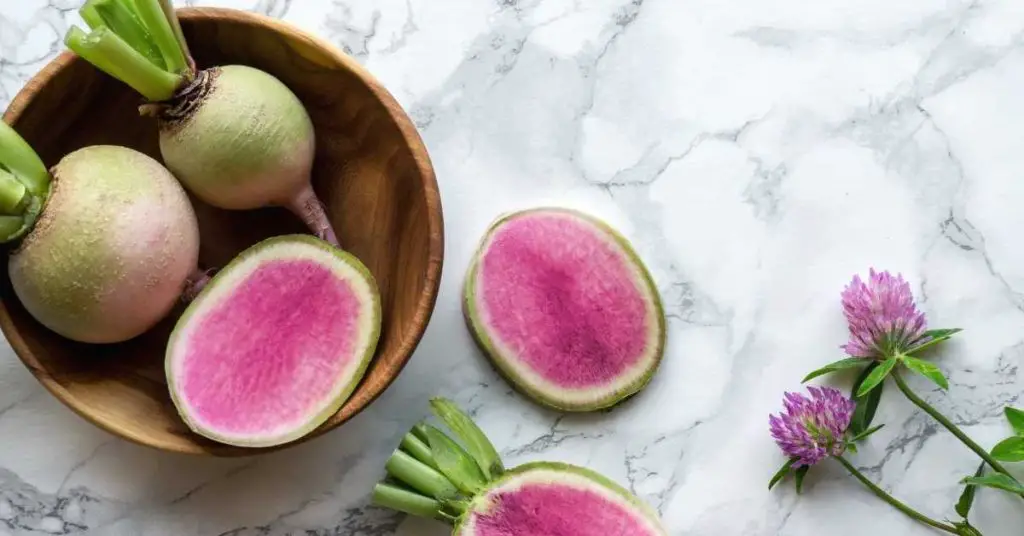
7. African Horned Cucumber (Cucumis metuliferus)
Known as ‘Kiwano’ or ‘jelly melon’, this exotic fruit has horned, orange skin and lime green, jelly-like inside. The taste is a mix of cucumber and zucchini with a hint of banana and lemon. High in vitamin C and antioxidants, it’s a unique and nutritious addition to fruit salads and smoothies.
The plant’s ornamental value, with striking fruit and lush vines, makes it a conversation piece in any garden. It prefers hot, dry conditions and needs plenty of space to spread.
- USDA Hardiness Zone: 10-12
- Daylight Requirements: Full sun
- Soil Needs: Well-drained, nutrient-rich soil
- Mature Size: Vines can grow up to 6-8 feet
- Container Growing: Yes, with adequate space and trellising
- Growing Season: Warm months
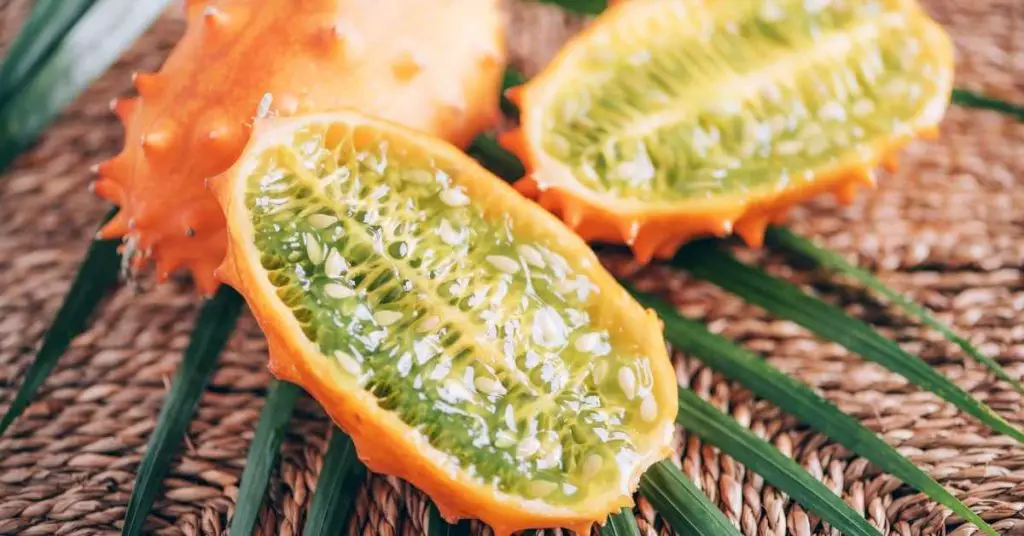
8. Sunchoke (Helianthus tuberosus)
Also known as Jerusalem artichoke, this plant produces tubers with a nutty, sweet taste, similar to a water chestnut. Sunchokes are rich in iron, potassium, and prebiotic fiber. They are easy to grow and can be used in a variety of dishes, from soups to salads.
The plant also produces attractive yellow flowers, similar to sunflowers. Ideal for gardeners looking for both aesthetic and culinary value, sunchokes are hardy and can adapt to various soil conditions.
- USDA Hardiness Zone: 3-9
- Daylight Requirements: Full sun
- Soil Needs: Well-drained, fertile soil
- Mature Size: Up to 10 feet tall
- Container Growing: Possible but requires large containers
- Growing Season: Plant in early spring, harvest in late fall
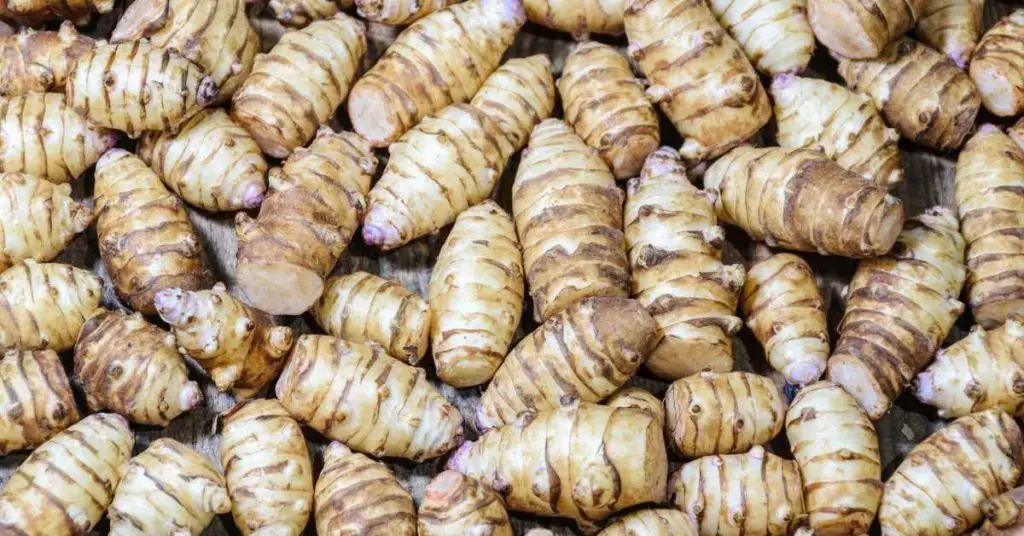
9. Purple Sweet Potato (Ipomoea batatas)
Purple sweet potatoes are not only delicious but also highly nutritious, rich in antioxidants, vitamins, and fiber. They have a unique, sweet, and earthy flavor and are versatile in cooking, from baking to mashing.
The plant’s ornamental value includes lush green foliage and vibrant purple tubers. They’re a great choice for gardeners who want to grow a nutrient-dense, visually appealing root vegetable.
Purple sweet potatoes thrive in warm climates but can also be grown in 5 gallon buckets or containers in cooler regions.
- USDA Hardiness Zone: 9-11
- Daylight Requirements: Full sun
- Soil Needs: Well-drained, fertile soil
- Mature Size: Tubers can grow up to 12 inches in length
- Container Growing: Yes, in deep pots
- Growing Season: Warm months
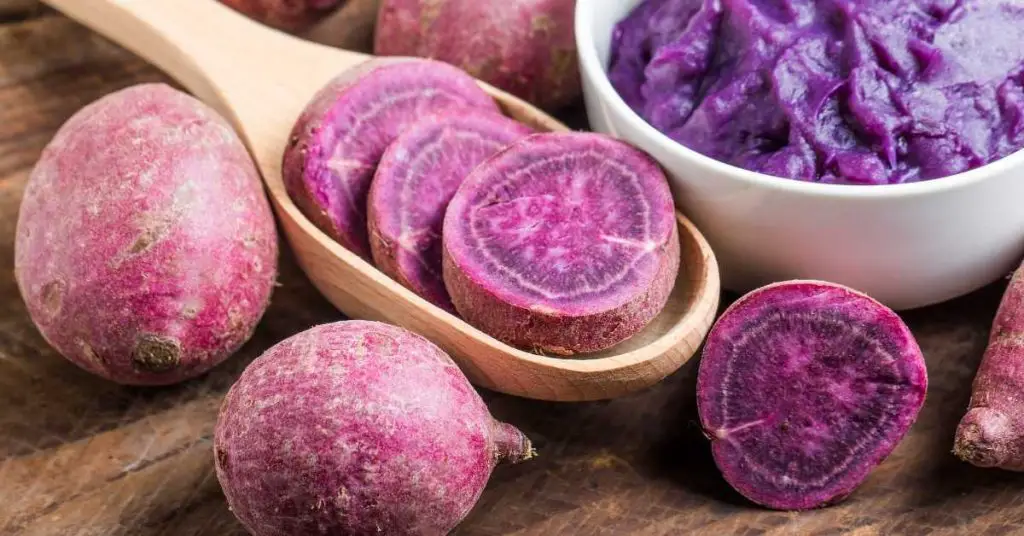
10. Black Nebula Carrot (Daucus carota)
The Black Nebula carrot is known for its deep purple, almost black color, which is maintained when cooked. These carrots are high in anthocyanins, providing antioxidant benefits. Their flavor is sweet and slightly spicy, making them a great choice for both raw and cooked dishes.
These carrots are a striking addition to any garden and are particularly appealing to gardeners interested in growing colorful, nutrient-rich root vegetables.
They require similar growing conditions to regular carrots but offer a more dramatic visual impact.
- USDA Hardiness Zone: 3-10
- Daylight Requirements: Full sun to partial shade
- Soil Needs: Well-drained, sandy or loamy soil
- Mature Size: Roots up to 8 inches long
- Container Growing: Yes
- Growing Season: Plant in spring and fall
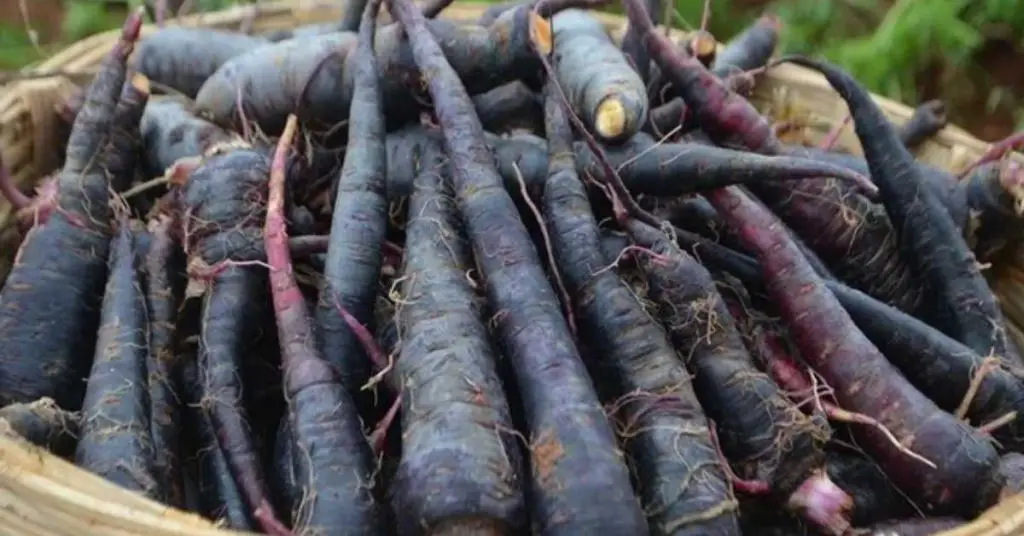
11. Chioggia Beet (Beta vulgaris)
Chioggia beets are distinctive for their concentric red and white rings inside, offering a sweet, peppery flavor. They are high in folate, fiber, and antioxidants. Chioggia beets are perfect for salads, pickling, and roasting.
Their unique appearance makes them a visually stunning addition to any dish. They’re an excellent choice for gardeners who enjoy both the aesthetic and culinary aspects of vegetable gardening.
These beets are relatively easy to grow and are more drought-tolerant than many other vegetables.
- USDA Hardiness Zone: 2-11
- Daylight Requirements: Full sun to partial shade
- Soil Needs: Well-drained, fertile soil
- Mature Size: Roots up to 3-4 inches in diameter
- Container Growing: Yes
- Growing Season: Plant in spring or late summer for fall harvest

12. Luffa Gourd (Luffa aegyptiaca)
Luffa gourds, also known as sponge gourds or vegetable sponges, are cultivated for their fibrous interior, which can be used as a natural sponge. Young fruits can be eaten like squash. These plants require a long growing season and plenty of space to climb.
They are fascinating to grow and offer both a practical and edible yield. Luffa gourds are an excellent choice for gardeners interested in growing unique, multipurpose plants.
- USDA Hardiness Zone: 7-11
- Daylight Requirements: Full sun
- Soil Needs: Well-drained, rich in organic matter
- Mature Size: Vines can grow 10-30 feet
- Container Growing: Yes, with ample space and climbing support
- Growing Season: Warm months
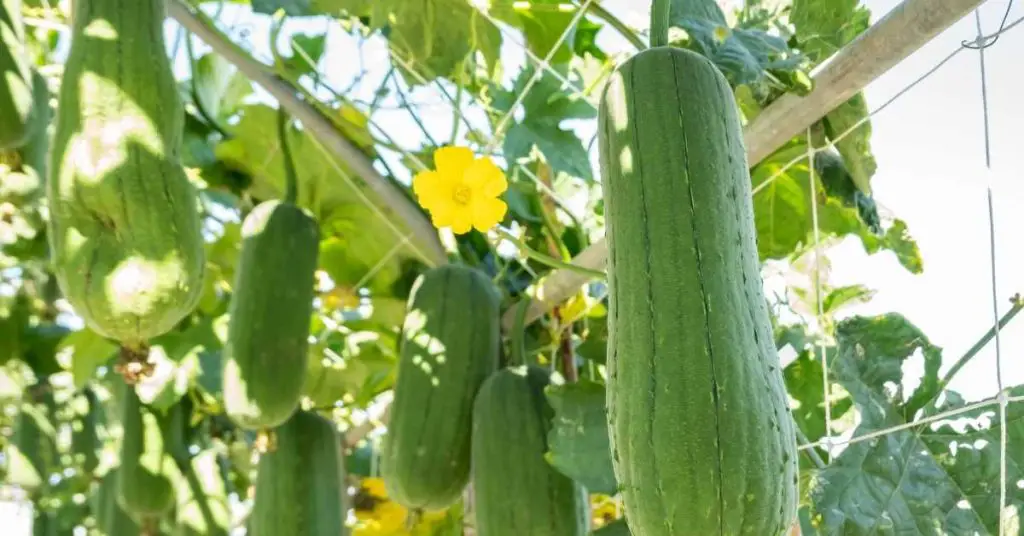
13. Glass Gem Corn (Zea mays)
Glass Gem Corn is famous for its jewel-like, multi-colored kernels that shine brilliantly. This heirloom variety is primarily used for popcorn or ornamental purposes. It’s a great conversation starter and is visually stunning in any garden.
This corn variety is ideal for gardeners who appreciate the beauty of heirloom crops and are interested in traditional agricultural practices. Glass Gem Corn requires similar growing conditions to other corn varieties but offers a more striking visual appeal.
- USDA Hardiness Zone: 4-8
- Daylight Requirements: Full sun
- Soil Needs: Well-drained, fertile soil
- Mature Size: Stalks can reach 6-9 feet tall
- Container Growing: Not recommended due to size
- Growing Season: Warm months, plant after last frost
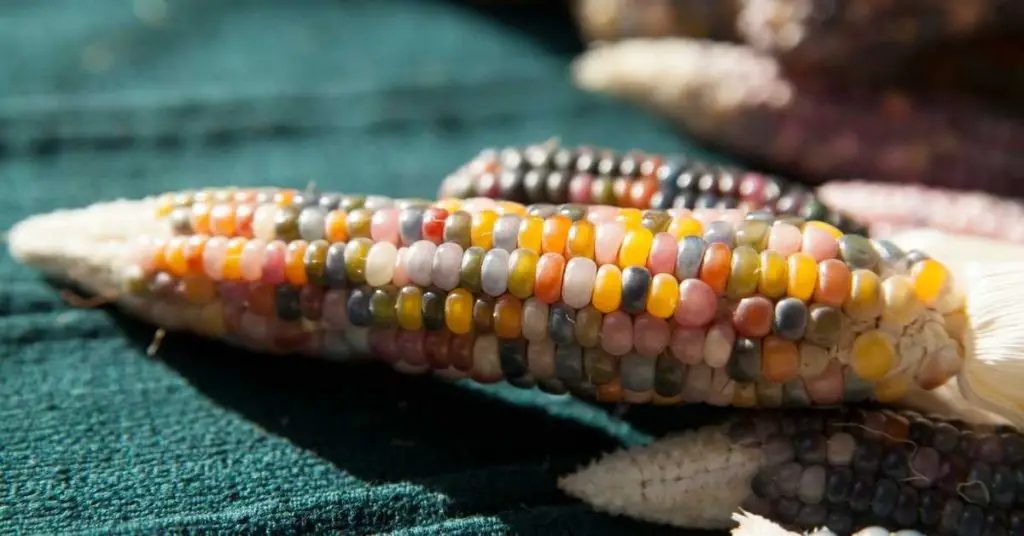
14. Aji Amarillo (Capsicum Baccatum)
The Aji Amarillo is a Peruvian pepper known for its vibrant yellow color and fiery heat. It’s commonly used in Peruvian cuisine, especially in the famous dish “Papa a la Huancaína.” These chilies are rich in vitamins A and C.
They are an excellent choice for spice lovers and those interested in South American culinary traditions. The plant is relatively easy to grow in warm climates and can also be cultivated in containers in cooler regions.
- USDA Hardiness Zone: 9-11
- Daylight Requirements: Full sun
- Soil Needs: Well-drained, fertile soil
- Mature Size: Plants can grow up to 3 feet tall
- Container Growing: Yes
- Growing Season: Warm months, or year-round in controlled conditions
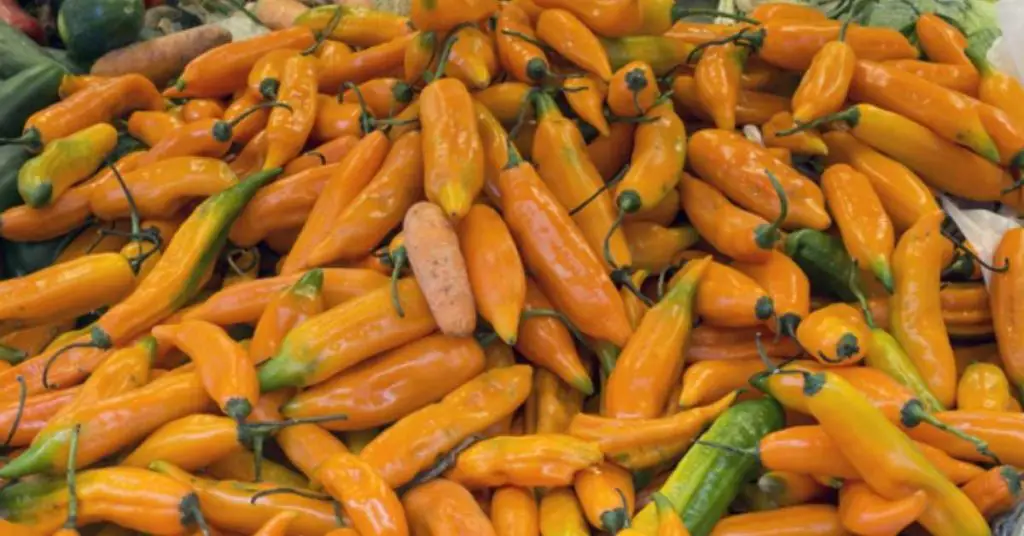
15. Rat’s Tail Radish (Raphanus caudatus)
Unlike traditional radishes, the Rat’s Tail radish is grown for its edible seed pods rather than its roots. These pods have a spicy, peppery flavor, similar to conventional radishes, and are perfect for salads or stir-fries.
The plant is heat tolerant and easy to grow, making it a great choice for gardeners seeking a unique and easy-to-harvest vegetable. Its unusual appearance and tasty pods make it a delightful addition to any garden.
- USDA Hardiness Zone: 2-11
- Daylight Requirements: Full sun
- Soil Needs: Fertile, well-drained soil
- Mature Size: Up to 2 feet tall
- Container Growing: Yes
- Growing Season: Plant in spring or fall
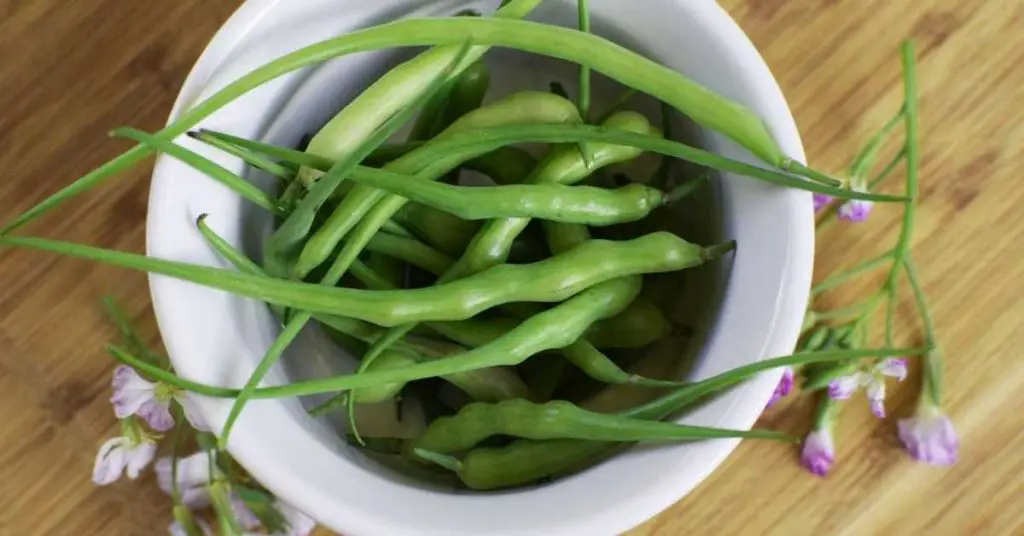
16. Toothache Plant (Acmella oleracea)
The toothache plant is known for its flower buds that create a tingling or numbing sensation in the mouth. It’s used in traditional medicine and as a unique culinary component.
The plant is a conversation starter due to its unusual effects and is ideal for adventurous gardeners interested in unusual herbs and edible flowers. It requires warm temperatures and can be grown in containers in cooler climates.
- USDA Hardiness Zone: 11-12
- Daylight Requirements: Full sun to partial shade
- Soil Needs: Well-drained, fertile soil
- Mature Size: Up to 18 inches tall
- Container Growing: Yes
- Growing Season: Warm months, or year-round in controlled environments
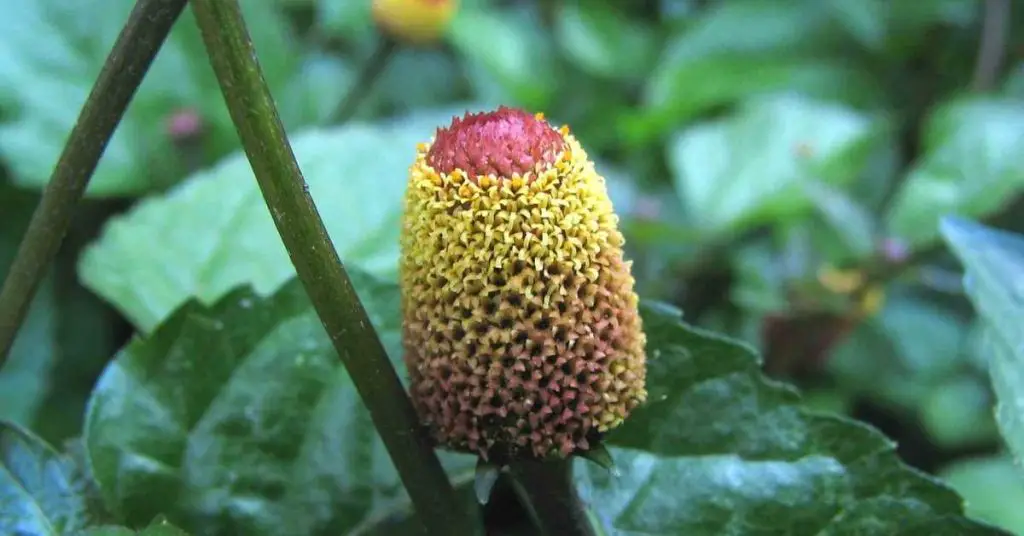
17. Pineberry (Fragaria x ananassa)
Pineberries are a unique variety of strawberry with a white color and red seeds. They taste similar to pineapples, hence the name. Pineberries are perfect for gardeners looking for an unusual twist on the classic strawberry.
They’re rich in antioxidants and vitamin C and make a visually interesting addition to fruit salads and desserts. Pineberries thrive in conditions similar to traditional strawberries and are suitable for container gardening.
- USDA Hardiness Zone: 4-8
- Daylight Requirements: Full sun to partial shade
- Soil Needs: Well-drained, fertile soil
- Mature Size: Up to 10 inches tall
- Container Growing: Yes
- Growing Season: Plant in early spring, fruit in summer
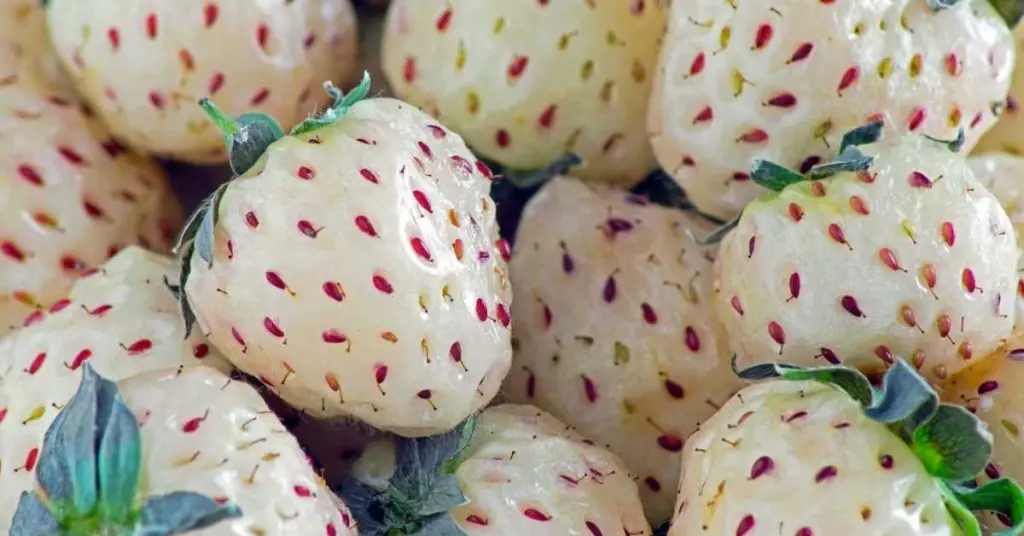
18. Water Spinach (Ipomoea aquatica)
Water spinach, also known as Kangkong, is a fast-growing, leafy green vegetable popular in Asian cuisine. It has a mild, slightly sweet flavor and is used in stir-fries, soups, and salads. The stems and the leaves can be used in cooking. The leaves and the stems are great in a stir fry.
This plant thrives in aquatic environments, making it a unique addition to water gardens or hydroponic systems. It’s an excellent choice for gardeners interested in experimenting with aquatic vegetables and offers both nutritional and culinary diversity.
- USDA Hardiness Zone: 9-11
- Daylight Requirements: Full sun to partial shade
- Soil Needs: Moist, fertile soil
- Mature Size: Vines up to 9 feet long
- Container Growing: Yes, in water-filled containers
- Growing Season: Warm months
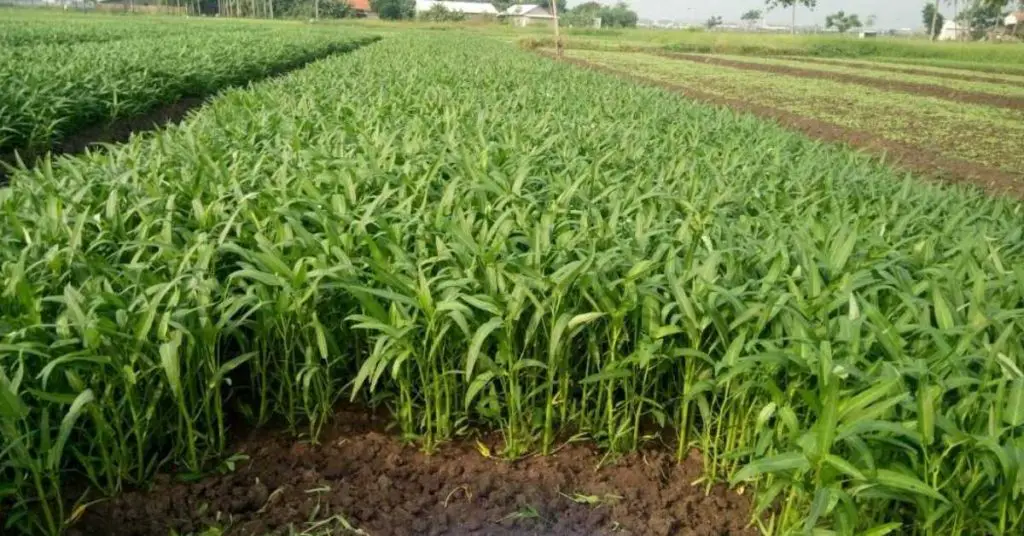
Kangkong or water spinach is also very adaptable to grow in just about any container or pot that you can find. It can grow in soil or just in water so it makes a great addition to your container garden.
Note
Water Spinach can be invasive so it is highly recommended to plant it in containers. Make sure to be watchful and not let the roots spread.
19. Tomatillo (Physalis philadelphica)
Tomatillos are small, green, or purple fruits encased in a paper-like husk. They are a staple in Mexican cuisine, essential for salsa verde and other sauces.
Tomatillos are rich in vitamins C and K and antioxidants. They are easy to grow and can be a more robust alternative to traditional tomatoes. Gardeners will appreciate their unique appearance and the flavorful punch they add to dishes.
- USDA Hardiness Zone: 8-11
- Daylight Requirements: Full sun
- Soil Needs: Well-drained, fertile soil
- Mature Size: Up to 4 feet tall and wide
- Container Growing: Yes
- Growing Season: Warm months, plant after the last frost
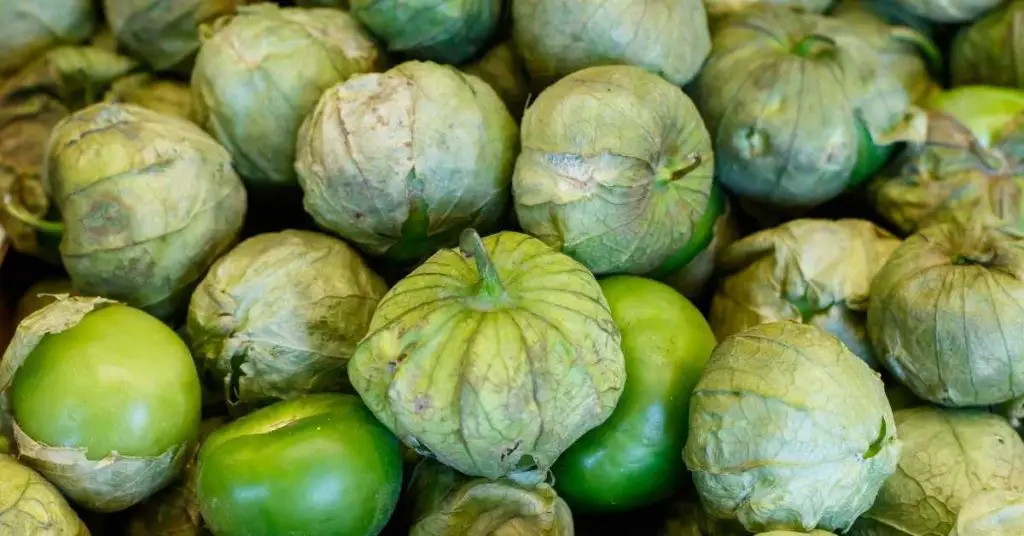
20. Sea Beans (Salicornia europaea)
Salicornia, commonly known as sea beans or samphire, is a succulent that thrives in saline environments. It has a crunchy texture and a salty flavor, making it a unique addition to salads and seafood dishes.
This plant is rich in vitamins and minerals, particularly iodine and vitamin A. Salicornia is an intriguing choice for gardeners with access to saline water or who are interested in experimenting with saltwater gardening.
- USDA Hardiness Zone: 3-9
- Daylight Requirements: Full sun
- Soil Needs: Moist, saline soil
- Mature Size: Up to 12 inches tall
- Container Growing: Yes, in saline water conditions
- Growing Season: Warm months
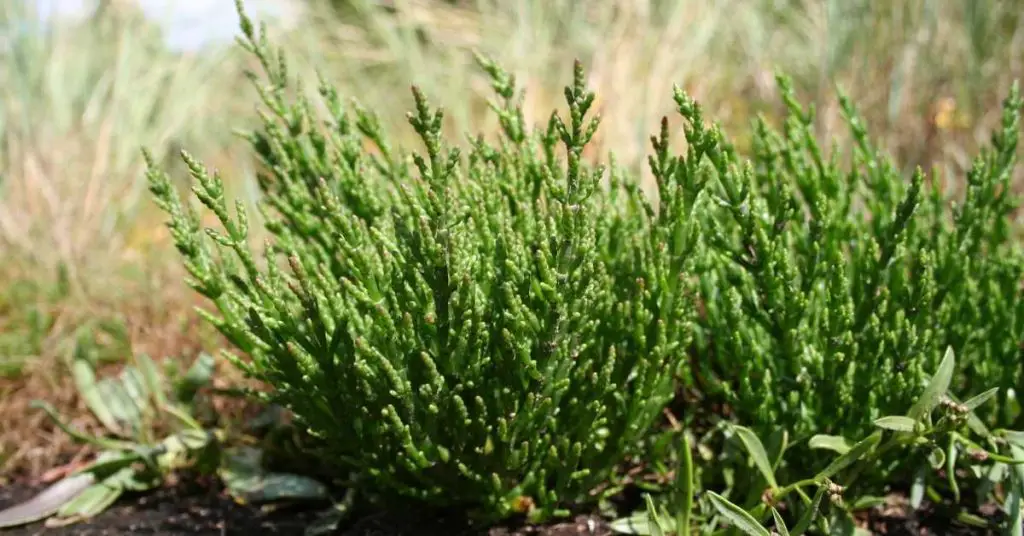
21. Kohlrabi (Brassica oleracea var. gongylodes)
Kohlrabi, with its bulbous stem and crisp, apple-like texture, offers a mild, sweet, turnip-like flavor. It’s rich in fiber and vitamin C. This vegetable is versatile in the kitchen, suitable for both raw and cooked dishes.
Kohlrabi is an excellent choice for gardeners looking for easy-to-grow, nutritious vegetables that can be used in a variety of culinary applications.
- USDA Hardiness Zone: 2-11
- Daylight Requirements: Full sun
- Soil Needs: Well-drained, fertile soil
- Mature Size: Up to 18 inches tall
- Container Growing: Yes
- Growing Season: Plant in early spring or late summer
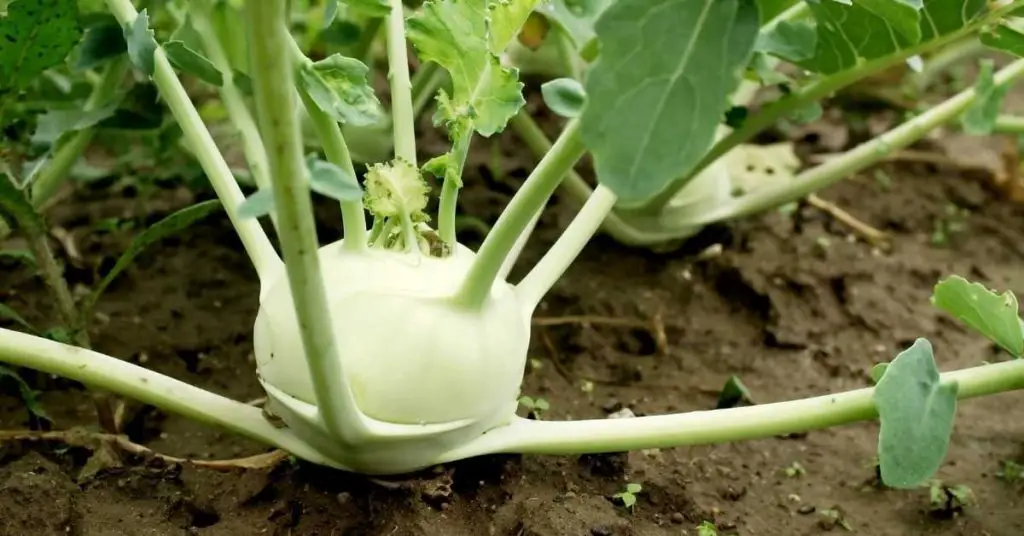
22. Nasturtium (Tropaeolum majus)
Nasturtiums are not only ornamental but also edible, with peppery-tasting leaves and vibrant flowers. They are a great source of vitamins A, C, and D. Nasturtiums can be used to add color and flavor to salads, sandwiches, and as a garnish.
They are also known for their companion planting benefits, deterring pests from other plants. This plant is ideal for gardeners who appreciate both beauty and utility in their garden.
- USDA Hardiness Zone: 9-11
- Daylight Requirements: Full sun to partial shade
- Soil Needs: Well-drained, poor to moderately fertile soil
- Mature Size: Up to 10 feet long for trailing varieties
- Container Growing: Yes
- Growing Season: Warm months
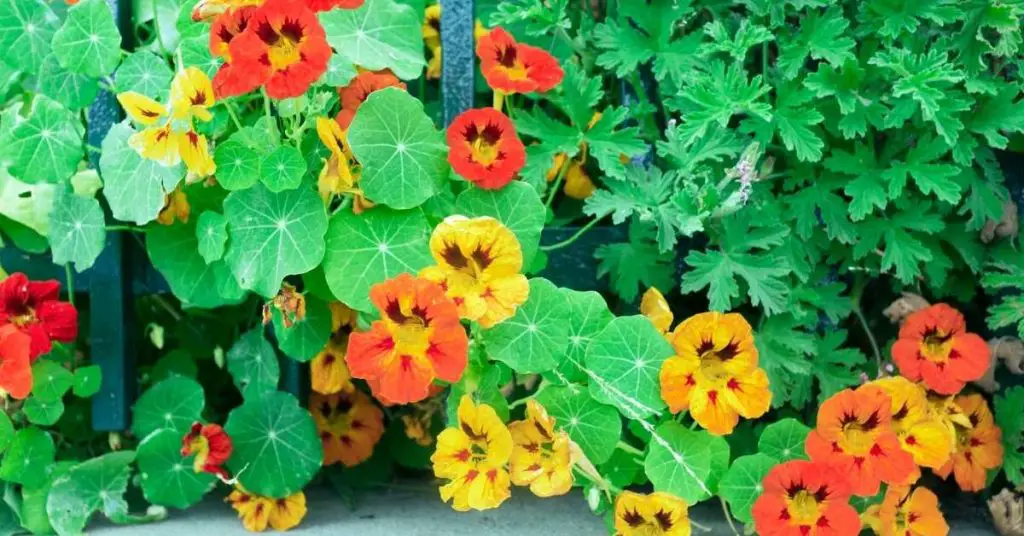
23. Okinawan Purple Sweet Potato (Ipomoea batatas)
The Okinawan Purple Sweet Potato is known for its striking purple flesh, which is rich in antioxidants and vitamins. It has a sweet, nutty flavor and can be used in a variety of dishes, from baked goods to savory meals.
This variety is not only nutritious but also adds a stunning visual element to your garden. It’s an excellent choice for gardeners looking to grow colorful and healthful root vegetables.
- USDA Hardiness Zone: 9-11
- Daylight Requirements: Full sun
- Soil Needs: Well-drained, fertile soil
- Mature Size: Tubers up to 12 inches in length
- Container Growing: Yes, in deep pots
- Growing Season: Warm months
24. Perilla (Perilla frutescens)
Perilla, also known as shiso or Korean perilla, is a herb widely used in Asian cuisine. The leaves have a unique flavor that is aromatic and complex, often described as a combination of mint, basil, and cinnamon.
Perilla is rich in vitamins and omega-3 fatty acids. It can be used in salads, as a wrap for sushi or grilled meats, and in pickling. This plant is ideal for gardeners interested in growing unique culinary herbs.
- USDA Hardiness Zone: 10-11
- Daylight Requirements: Full sun to partial shade
- Soil Needs: Well-drained, fertile soil
- Mature Size: Up to 2 feet tall
- Container Growing: Yes
- Growing Season: Warm months
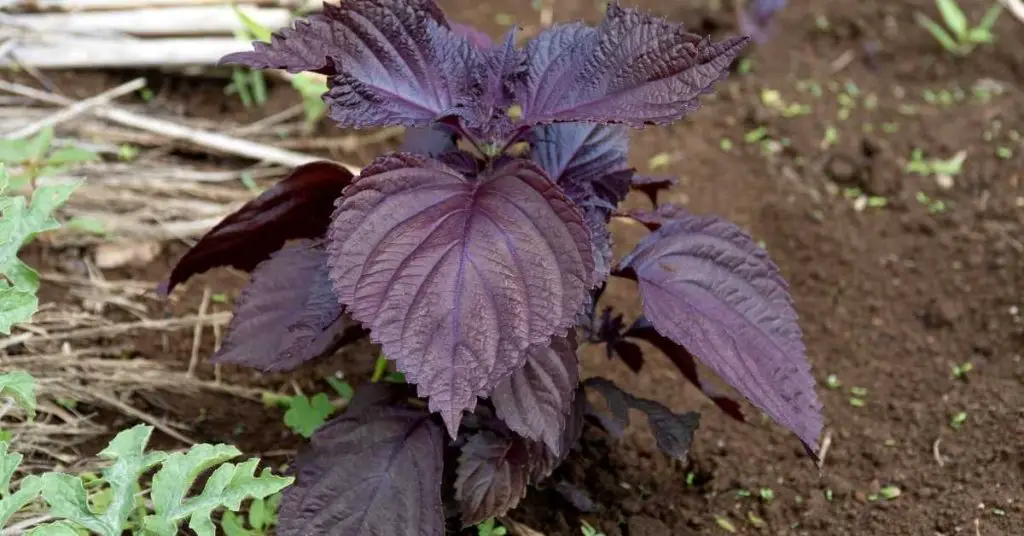
25. Huauzontle (Chenopodium nuttalliae)
Huauzontle is a traditional Mexican plant, related to quinoa, grown for its flavorful seed heads. It’s used in many dishes, often battered and fried. High in protein, fiber, and minerals, it’s a nutritious addition to any diet.
The plant resembles a leafy green bush with red or green flowering sprouts. Huauzontle is a great choice for gardeners looking to explore traditional crops from different cultures and add diversity to their kitchen.
- USDA Hardiness Zone: 2-11
- Daylight Requirements: Full sun to partial shade
- Soil Needs: Well-drained, fertile soil
- Mature Size: Up to 6 feet tall
- Container Growing: Yes
- Growing Season: Plant in spring, harvest in late summer
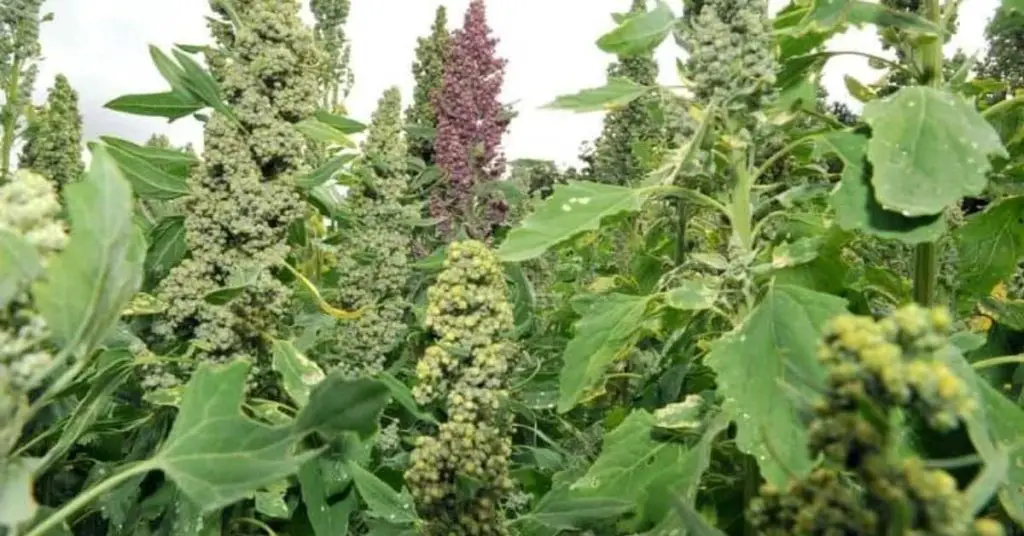
26. Wonderberry (Solanum retroflexum)
Wonderberry, also known as sunberry, produces small, dark purple berries that taste similar to blueberries when fully ripe. They are great for fresh eating, jams, and pies.
This plant is a prolific producer and can offer a continuous harvest throughout the season.
It’s an excellent choice for gardeners interested in growing unusual fruiting plants that are both ornamental and productive.
- USDA Hardiness Zone: Annual in all zones
- Daylight Requirements: Full sun
- Soil Needs: Well-drained, fertile soil
- Mature Size: Up to 3 feet tall and wide
- Container Growing: Yes
- Growing Season: Warm months
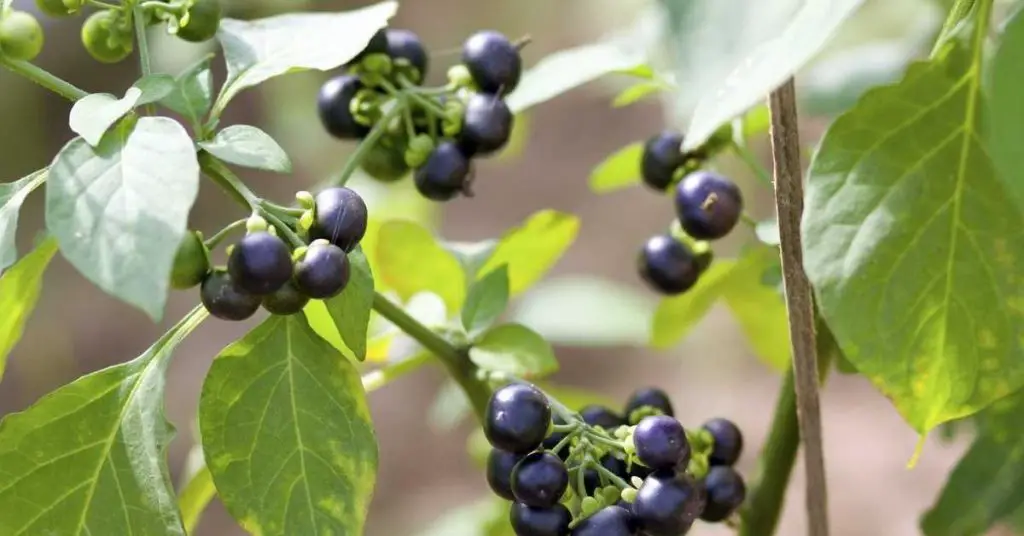
27. Celeriac (Apium graveolens var. rapaceum)
Celeriac, also known as celery root, is grown for its large, edible root. It has a celery-like flavor with nutty undertones and can be eaten raw or cooked.
Rich in fiber and vitamins, it’s a versatile vegetable in the kitchen. The plant requires a long growing season and consistent moisture.
It’s a good choice for gardeners interested in root vegetables that offer a different flavor profile than the more common options.
- USDA Hardiness Zone: 5-9
- Daylight Requirements: Full sun to partial shade
- Soil Needs: Rich, moist, well-drained soil
- Mature Size: Up to 1 foot tall and wide
- Container Growing: Yes
- Growing Season: Cool months, plant in early spring
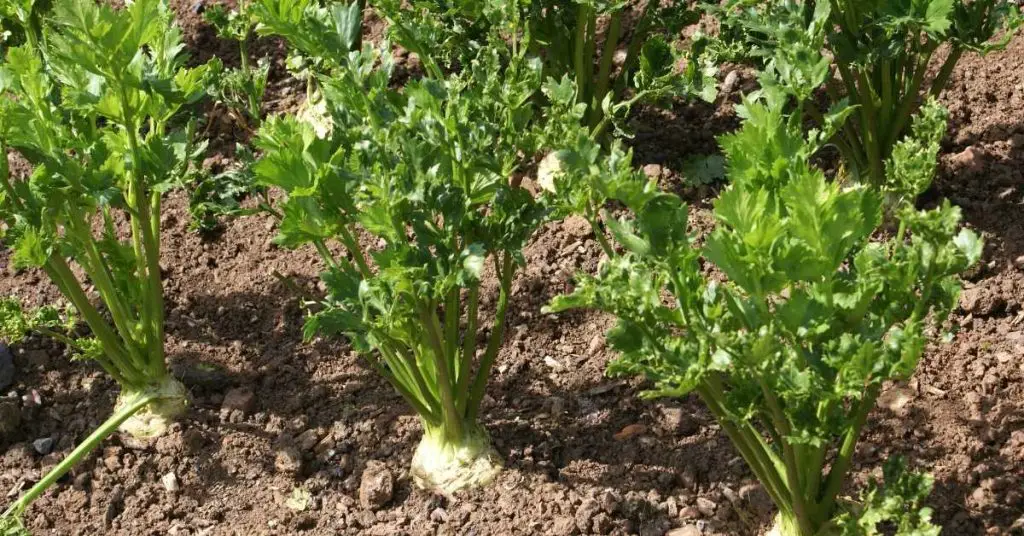
28. Jicama (Pachyrhizus erosus)
Jicama is a root vegetable with a crisp, apple-like texture and a slightly sweet, nutty flavor. It’s commonly eaten raw in salads or with dips. Jicama is high in fiber, vitamin C, and potassium.
The plant produces attractive vines and flowers, although only the root is edible. It’s a great choice for gardeners looking for a crunchy, nutritious addition to their vegetable selection.
- USDA Hardiness Zone: 7-10
- Daylight Requirements: Full sun
- Soil Needs: Well-drained, sandy soil
- Mature Size: Vines can grow over 15 feet long
- Container Growing: Yes, with deep containers and support for vines
- Growing Season: Warm months
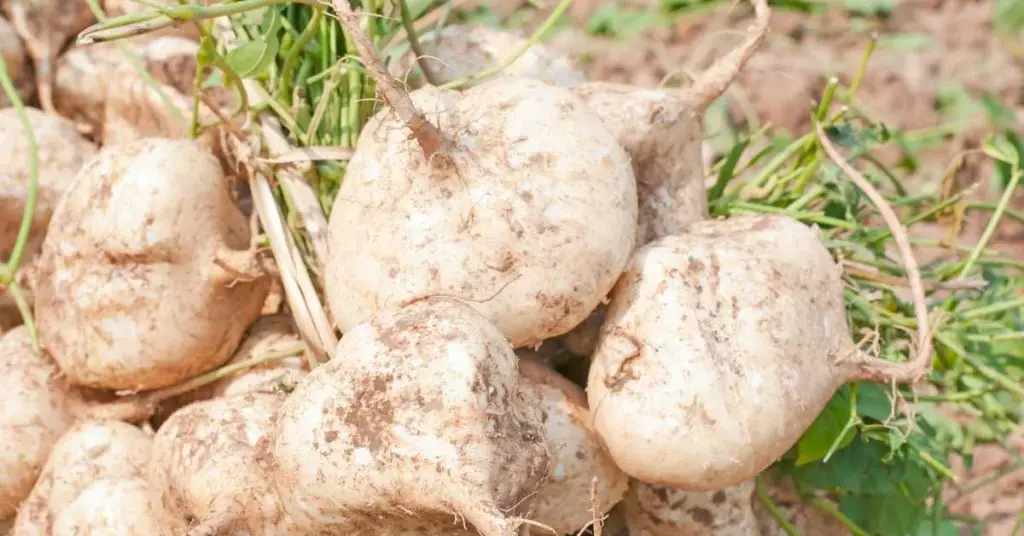
29. Achocha (Cyclanthera pedata)
Achocha, also known as the Bolivian cucumber, is a vine plant producing small, green, cucumber-like fruits. The taste is mild and slightly sweet, similar to a cross between a cucumber and a green pepper.
Achocha is easy to grow, prolific, and can be used in salads, stir-fries, or stuffed like a bell pepper. It’s an excellent choice for gardeners seeking unusual and versatile climbing plants.
- USDA Hardiness Zone: 9-11
- Daylight Requirements: Full sun
- Soil Needs: Well-drained, fertile soil
- Mature Size: Vines can reach over 10 feet long
- Container Growing: Yes, with support for climbing
- Growing Season: Warm months
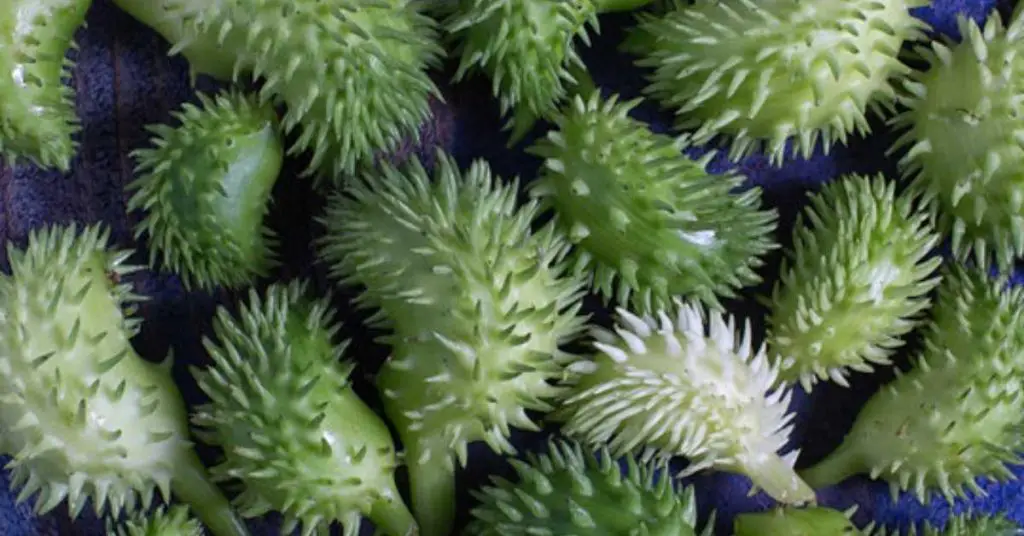
30. Ground Cherry (Physalis pruinosa)
Ground cherries, also known as husk cherries or cape gooseberries, produce small, sweet, yellow-orange fruits encased in a papery husk. The taste is a delightful blend of pineapple, tomato, and mango.
They’re rich in vitamins A, C, and B-complex. Ground cherries are perfect for fresh eating, pies, jams, and salads.
They’re a great choice for gardeners interested in fruit-bearing plants that offer a unique flavor and are relatively easy to grow.
- USDA Hardiness Zone: 4-8
- Daylight Requirements: Full sun
- Soil Needs: Well-drained, fertile soil
- Mature Size: Up to 2-3 feet tall and wide
- Container Growing: Yes
- Growing Season: Warm months, plant after last frost
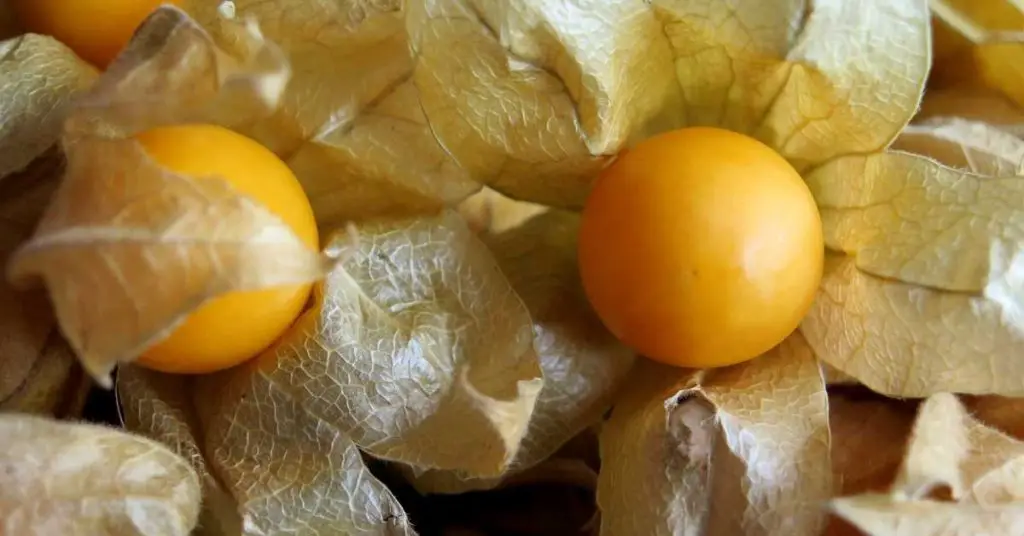
31. Yardlong Bean (Vigna unguiculata subsp. sesquipedalis)
Yardlong beans, also known as asparagus beans or snake beans, are a staple in Asian cuisine. These beans grow up to a yard long but are best harvested when they’re about half their mature size for the best texture and flavor.
They have a slightly sweet, grassy taste and are used in stir-fries, curries, and steamed dishes. This plant is an excellent choice for gardeners looking for high-yielding, unusual, and delicious beans.
- USDA Hardiness Zone: 9-11
- Daylight Requirements: Full sun
- Soil Needs: Well-drained, fertile soil
- Mature Size: Vines can grow over 8-12 feet long
- Container Growing: Yes, with adequate support for climbing
- Growing Season: Warm months
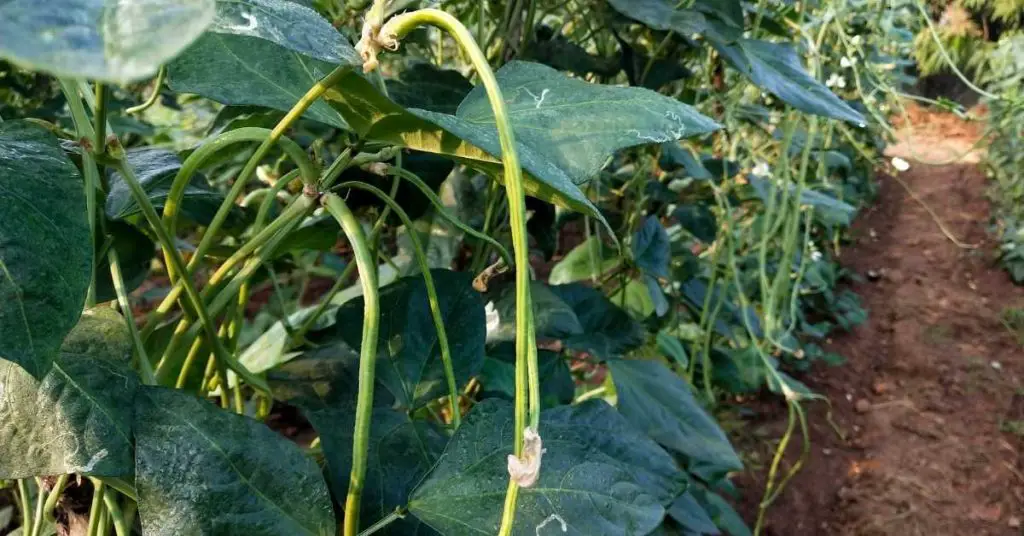
32. Salsify (Tragopogon porrifolius)
Salsify, also known as the oyster plant, is a root vegetable with a creamy texture and a flavor reminiscent of oysters. It’s rich in fiber, vitamins, and minerals.
The roots can be boiled, mashed, or used in soups and stews. Salsify also produces attractive purple flowers.
It’s a great choice for gardeners interested in heirloom vegetables and those looking for a root vegetable with a unique flavor.
- USDA Hardiness Zone: 5-9
- Daylight Requirements: Full sun
- Soil Needs: Well-drained, deep, loose soil
- Mature Size: Up to 3 feet tall
- Container Growing: Yes, in deep containers
- Growing Season: Plant in spring, harvest in late fall or winter
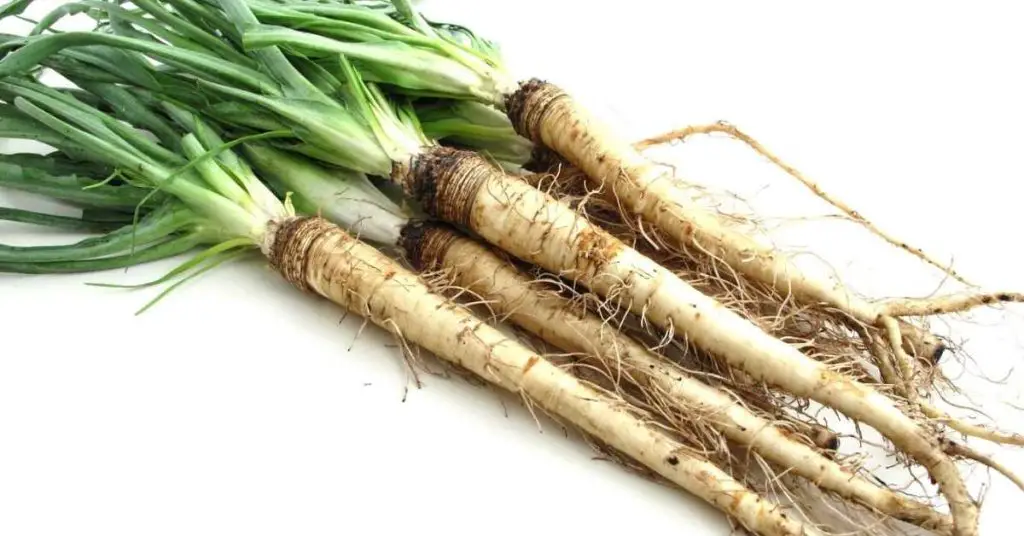
33. Scarlet Runner Bean (Phaseolus coccineus)
Scarlet runner beans are known for their bright red flowers and edible beans. They can be eaten young as green beans or mature as dried beans.
The plant is also ornamental, attracting hummingbirds and butterflies. These beans are high in protein, fiber, and vitamins.
They’re perfect for gardeners who want a versatile, attractive, and productive plant in their garden.
- USDA Hardiness Zone: Annual in all zones
- Daylight Requirements: Full sun
- Soil Needs: Well-drained, fertile soil
- Mature Size: Vines can grow up to 12 feet long
- Container Growing: Yes, with support for climbing
- Growing Season: Warm months
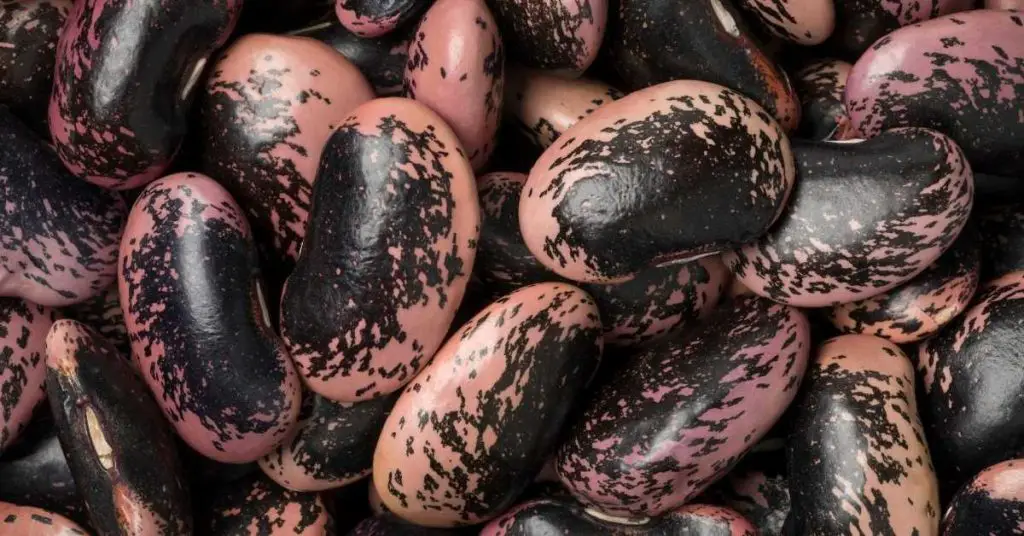
34. Oyster Leaf (Mertensia maritima)
Oyster leaf, also known as sea bluebells, is a unique herb with leaves that taste remarkably like oysters. It’s a fascinating plant for culinary experimentation, perfect for adding a seafood-like flavor to vegetarian dishes.
The plant is also attractive, with silvery-blue foliage. Oyster leaf is ideal for gardeners interested in unusual herbs and flavors, especially those looking to replicate seafood tastes in plant-based cooking.
- USDA Hardiness Zone: 4-9
- Daylight Requirements: Full sun to partial shade
- Soil Needs: Well-drained, sandy soil
- Mature Size: Up to 12 inches tall
- Container Growing: Yes
- Growing Season: Cool months
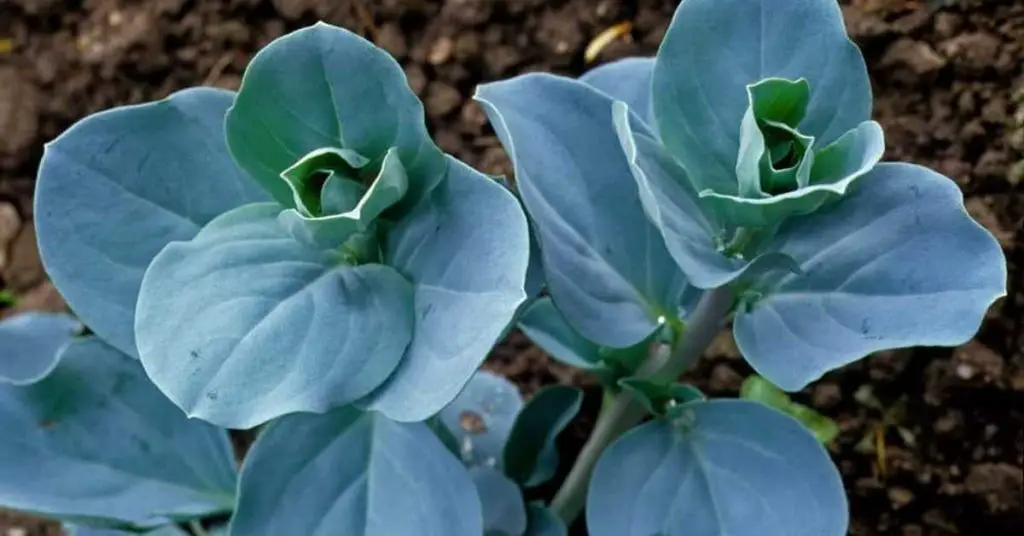
35. Winter Melon (Benincasa hispida)
Winter melon, also known as ash gourd, is a large fruit used predominantly in Asian cuisine, especially in soups and stews. The flesh is mild and slightly sweet when cooked.
It’s known for its keeping quality, as the fruit can be stored for months. Winter melon is rich in vitamins and minerals and is particularly hydrating.
It’s a great choice for gardeners interested in growing large, storage-friendly fruits.
- USDA Hardiness Zone: 10-12
- Daylight Requirements: Full sun
- Soil Needs: Well-drained, fertile soil
- Mature Size: Vines can reach over 10 feet; fruits up to 2 feet long
- Container Growing: Possible but challenging due to size
- Growing Season: Warm months
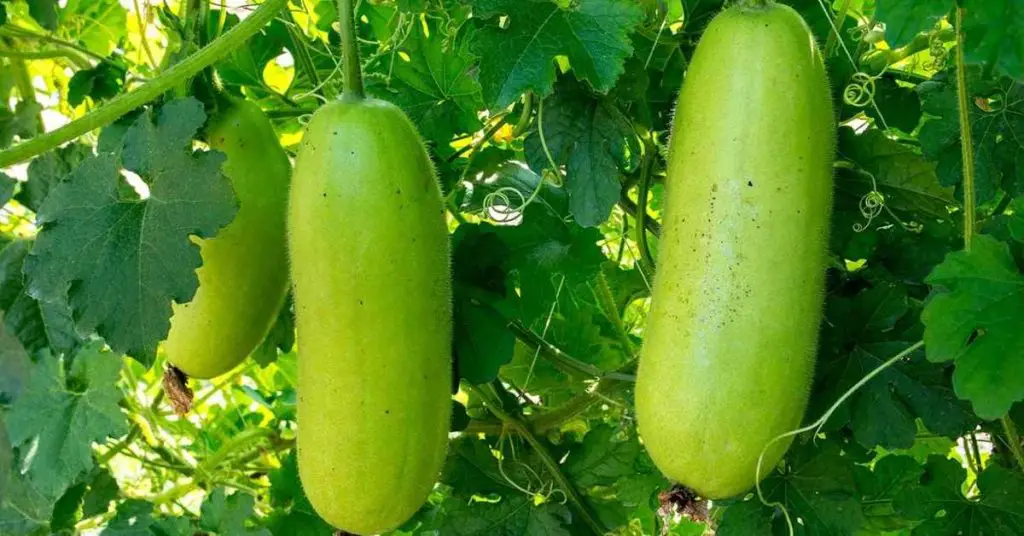
36. Romanesco Artichoke (Cynara cardunculus var. scolymus)
The Romanesco artichoke is known for its tender, flavorful hearts and striking appearance. It’s a gourmet variety, prized for its nutty flavor and firm texture.
Rich in fiber, vitamins, and antioxidants, it’s a healthy addition to any diet. This artichoke variety is ideal for gardeners interested in growing specialty vegetables that offer both culinary excellence and ornamental beauty.
- USDA Hardiness Zone: 7-11
- Daylight Requirements: Full sun
- Soil Needs: Well-drained, fertile soil
- Mature Size: Up to 4 feet tall and wide
- Container Growing: Yes, in large containers
- Growing Season: Plant in early spring, harvest in summer
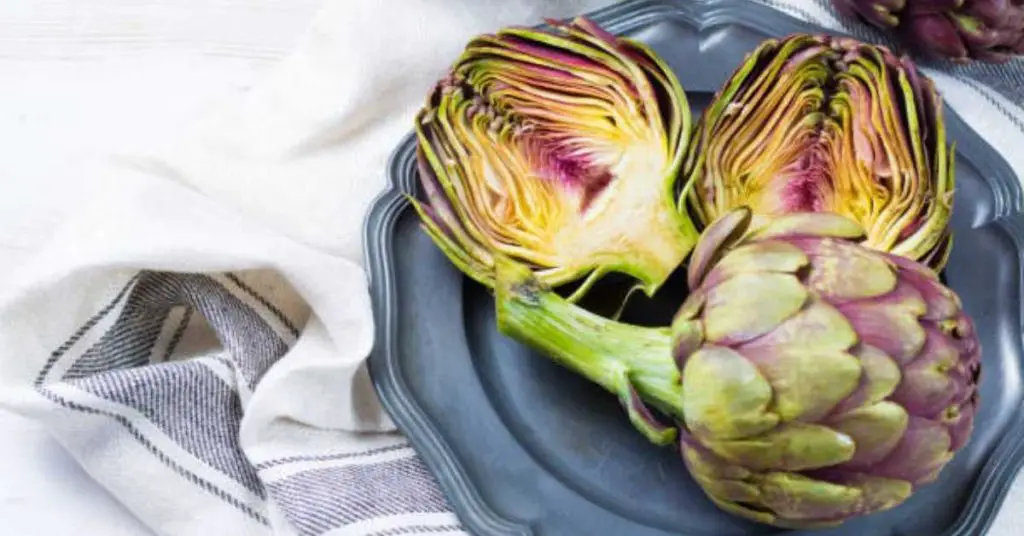
37. Cardoon (Cynara cardunculus)
Cardoon is closely related to the artichoke but is grown for its edible leaf stalks rather than its flower buds. It has a flavor similar to artichoke hearts.
The plant is striking with silvery-green foliage and large thistle-like flowers. It’s rich in fiber, vitamins, and minerals.
Cardoon is a great choice for gardeners interested in ornamental edibles and Mediterranean cuisine.
- USDA Hardiness Zone: 7-10
- Daylight Requirements: Full sun
- Soil Needs: Well-drained, fertile soil
- Mature Size: Up to 5 feet tall and wide
- Container Growing: Possible but best grown in-ground
- Growing Season: Plant in early spring, harvest in late fall
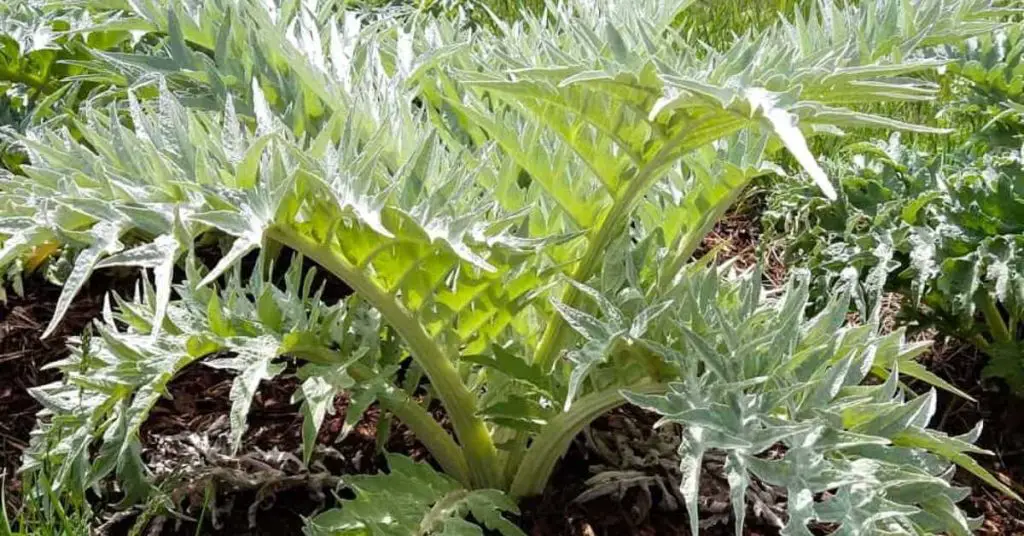
38. Chinese Artichoke (Stachys affinis)
The Chinese artichoke, produces small, white, knobby tubers with a crisp texture and a sweet, nutty flavor. They’re often used in salads or stir-fries. Crosnes are high in fiber and low in starch.
The plant is easy to grow and can be a prolific producer. It’s a unique alternative to traditional root vegetables and is ideal for gardeners looking for unusual edible tubers.
- USDA Hardiness Zone: 5-9
- Daylight Requirements: Full sun to partial shade
- Soil Needs: Well-drained, fertile soil
- Mature Size: Up to 18 inches tall
- Container Growing: Yes
- Growing Season: Plant in spring, harvest in late fall
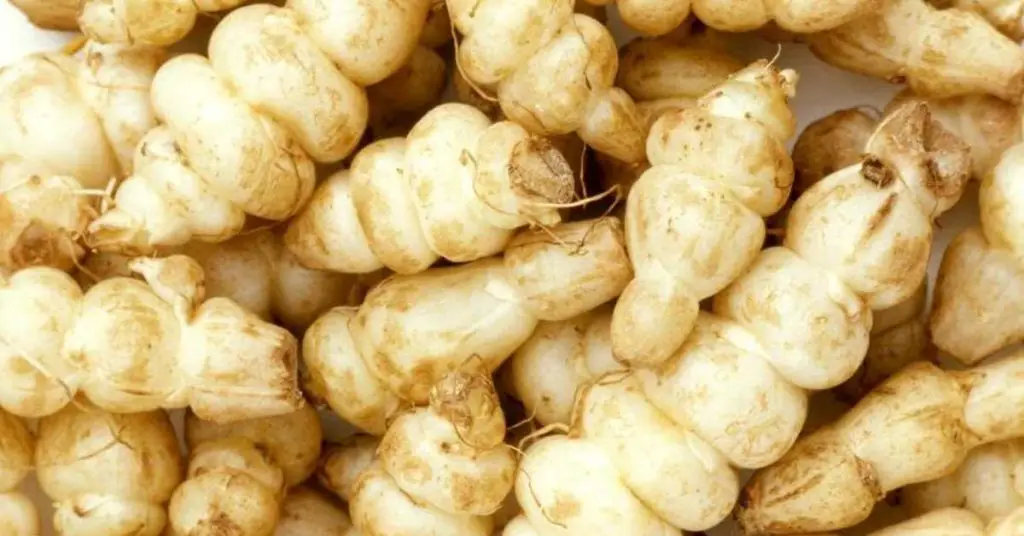
39. Malanga (Xanthosoma sagittifolium)
Malanga is a root vegetable popular in Caribbean and South American cuisine. The tubers have a creamy texture and a flavor similar to nuts and potatoes. Rich in carbohydrates, fiber, and vitamins, it’s a nutritious addition to any diet.
The plant has large, attractive leaves, adding an ornamental element to your garden. Malanga is an excellent choice for gardeners interested in tropical root crops.
- USDA Hardiness Zone: 9-11
- Daylight Requirements: Partial shade
- Soil Needs: Rich, moist, well-drained soil
- Mature Size: Up to 5 feet tall
- Container Growing: Yes, in large containers
- Growing Season: Warm months
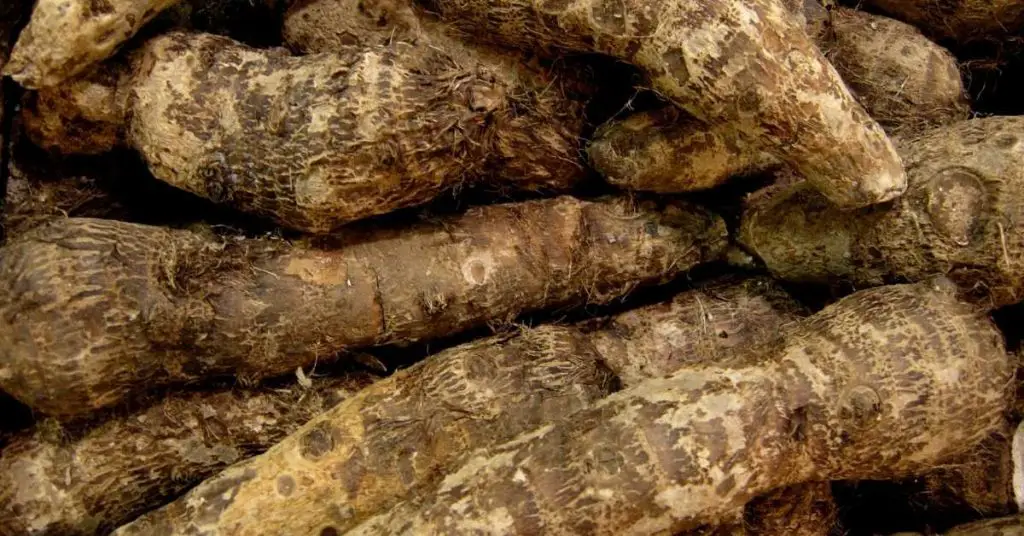
40. Peter Pepper (Capsicum annuum ‘Peter Pepper’)
Peter Pepper is known for its unique and unusual shape, which has a striking resemblance to a certain male body part. The peppers are hot and flavorful, ranging in color from green to red when ripe.
This variety is often grown for its novelty value and can be a conversation starter in any garden.
- USDA Hardiness Zone: 9-11
- Daylight Requirements: Full sun
- Soil Needs: Well-drained, fertile soil
- Mature Size: Up to 2 feet tall
- Container Growing: Yes
- Growing Season: Warm months
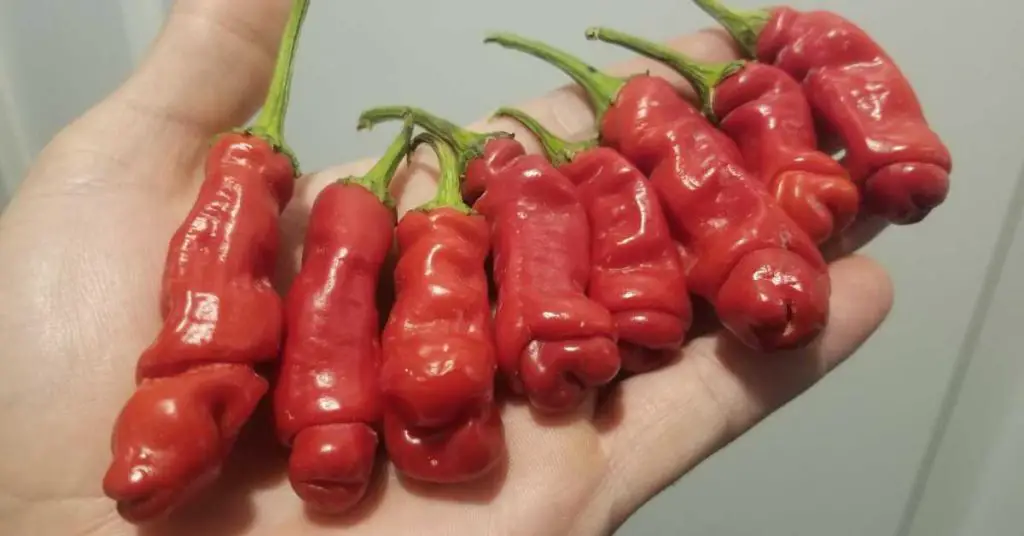
41. Hamburg Parsley (Petroselinum crispum var. tuberosum)
Hamburg parsley, also known as root parsley, is grown for its edible root, which tastes like a cross between parsley and a parsnip. The root can be used in soups, stews, and roasted dishes.
It’s rich in vitamins and minerals, especially vitamin C. The plant also produces edible leafy greens that resemble flat-leaf parsley.
It’s an excellent choice for gardeners looking for a dual-purpose vegetable, offering both flavorful roots and greens.
- USDA Hardiness Zone: 2-11
- Daylight Requirements: Full sun to partial shade
- Soil Needs: Well-drained, fertile soil
- Mature Size: Up to 2 feet tall
- Container Growing: Yes
- Growing Season: Plant in spring, harvest roots in fall
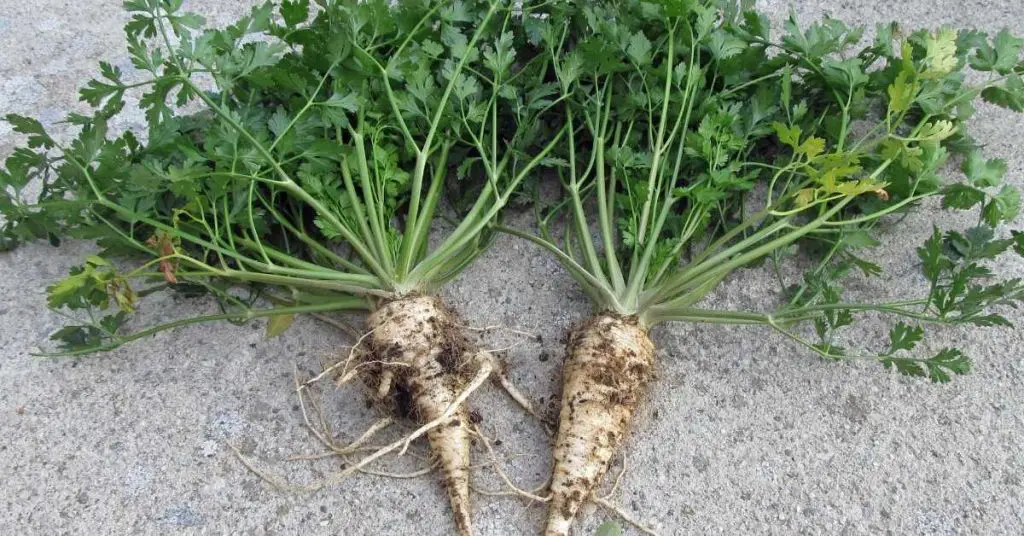
42. Chayote (Sechium edule)
Chayote is a squash-like vegetable, often used in Latin American cuisine. It has a mild, crisp texture, suitable for both raw and cooked applications. The plant produces prolifically and can be used in a variety of dishes, from salads to stir-fries.
Chayote is high in vitamin C and amino acids. It’s a great option for gardeners interested in versatile, high-yielding vegetables.
- USDA Hardiness Zone: 8-11
- Daylight Requirements: Full sun
- Soil Needs: Well-drained, fertile soil
- Mature Size: Vines can grow up to 50 feet long
- Container Growing: Yes, with ample space and support
- Growing Season: Warm months
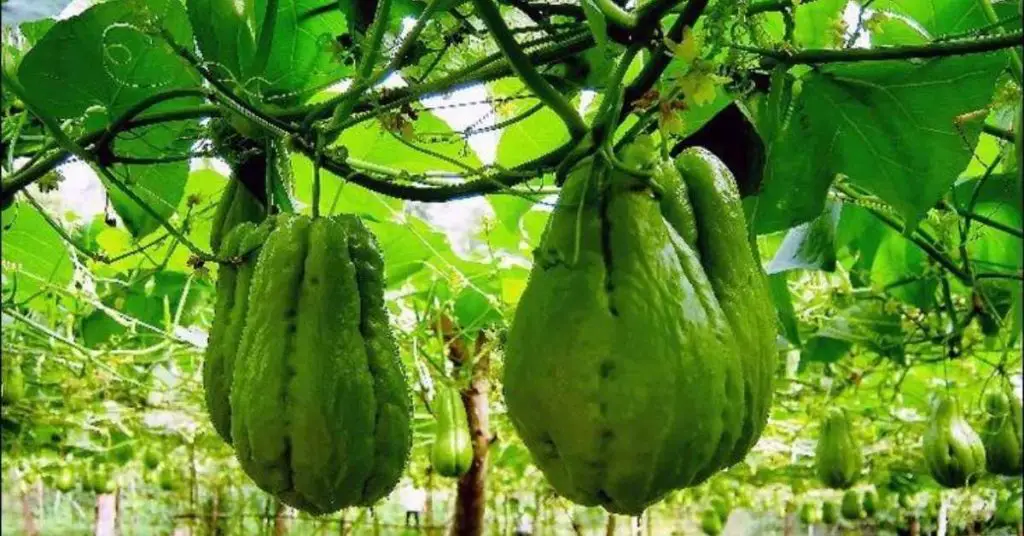
43. Taro (Colocasia esculenta)
Taro is a root vegetable commonly used in Asian, African, and Pacific Island cuisines. Its starchy roots and leaves are edible when cooked and are known for their nutty flavor.
Taro is rich in carbohydrates, fiber, and vitamins. The plant also has ornamental value with its large, attractive leaves.
Taro is suitable for gardeners interested in tropical vegetables and those with pond or bog garden settings.
- USDA Hardiness Zone: 9-11
- Daylight Requirements: Partial shade
- Soil Needs: Moist, well-drained soil
- Mature Size: Up to 6 feet tall
- Container Growing: Yes, in large, water-retentive containers
- Growing Season: Warm months

44. Orach (Atriplex hortensis)
Orach, also known as mountain spinach, is a leafy green with a slightly salty, spinach-like flavor. It comes in various colors, including red, green, and purple, adding visual appeal to your garden and dishes.
Orach is rich in vitamins and minerals, especially iron and calcium. It’s a great alternative to spinach for gardeners dealing with hot climates, as it’s more heat-tolerant.
- USDA Hardiness Zone: 4-8
- Daylight Requirements: Full sun to partial shade
- Soil Needs: Well-drained, fertile soil
- Mature Size: Up to 6 feet tall
- Container Growing: Yes
- Growing Season: Cool months, plant in early spring
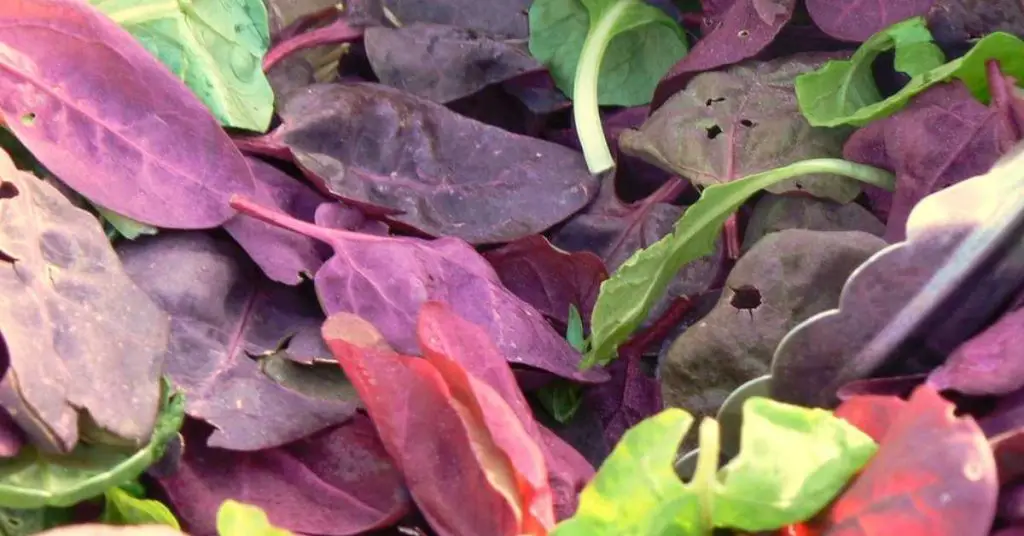
45. Black Salsify (Scorzonera hispanica)
Black salsify, also known as Spanish salsify, is a root vegetable with a creamy texture and a sweet, slightly nutty flavor, often compared to oysters. It’s high in fiber and potassium.
The roots are great for boiling, mashing, or frying. The plant produces attractive purple flowers.
Black salsify is a good choice for gardeners interested in unique root vegetables that offer both culinary versatility and ornamental value.
- USDA Hardiness Zone: 3-8
- Daylight Requirements: Full sun
- Soil Needs: Well-drained, deep, loose soil
- Mature Size: Up to 3 feet tall
- Container Growing: Yes, in deep containers
- Growing Season: Plant in spring, harvest in late fall or winter
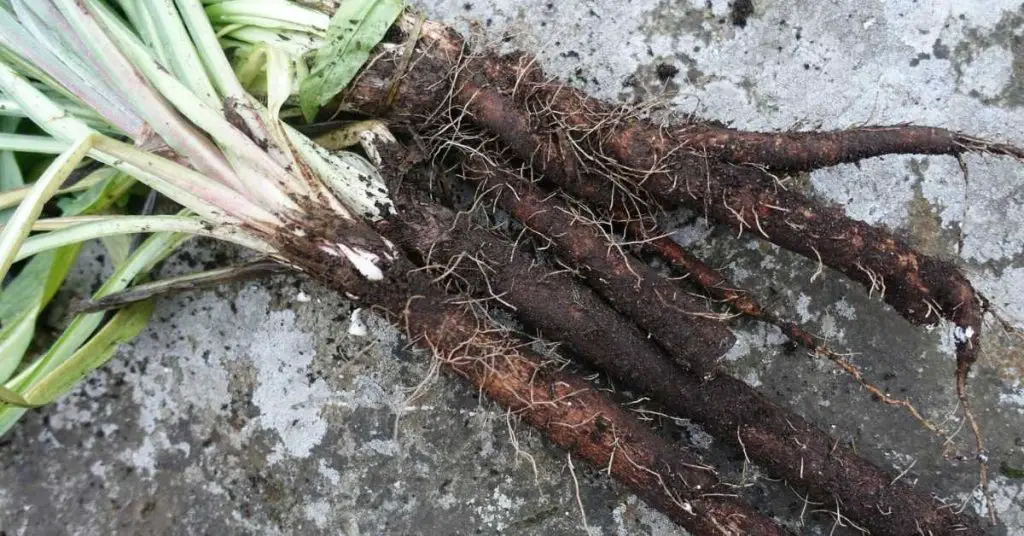
46. Aji Charapita (Capsicum chinense)
Aji Charapita is a wild Peruvian pepper known for its small, round, yellow fruits. Despite their tiny size, these peppers pack a spicy punch.
They are highly valued in gourmet cooking and are considered one of the most expensive peppers in the world. The plant is bushy and can be grown in containers, making it suitable for small spaces.
- USDA Hardiness Zone: 10-12
- Daylight Requirements: Full sun
- Soil Needs: Well-drained, fertile soil
- Mature Size: Up to 2 feet tall
- Container Growing: Yes
- Growing Season: Warm months
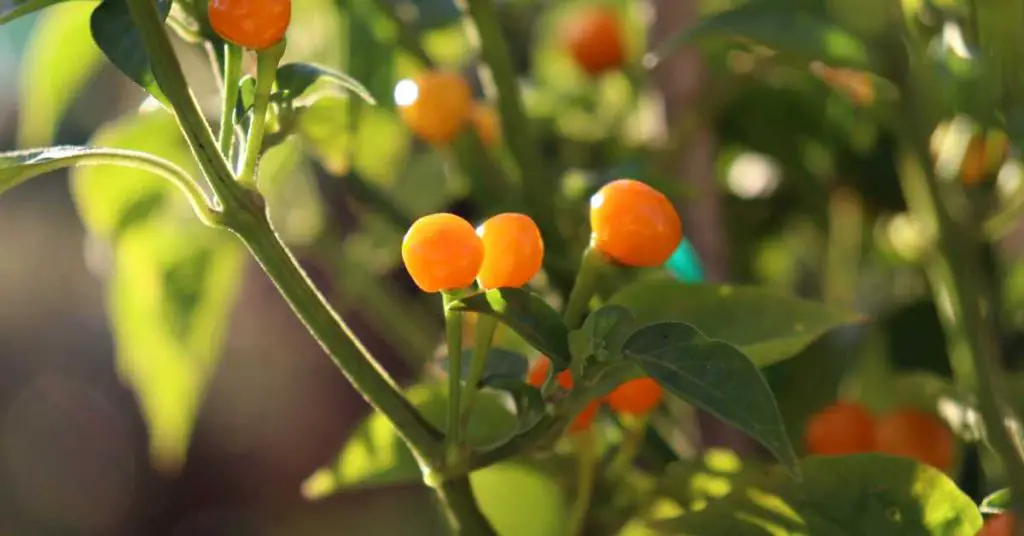
47. Gobo (Arctium lappa)
Gobo, commonly known as burdock root, is a staple in Japanese cuisine. The roots are long and slender with a sweet, earthy flavor, often used in soups, stews, and stir-fries.
Gobo is known for its medicinal properties and is rich in fiber and vitamins. The plant requires a long growing season and deep soil to accommodate its lengthy roots.
It’s a great choice for gardeners looking to grow unique, nutritious, and medicinal plants.
- USDA Hardiness Zone: 2-9
- Daylight Requirements: Full sun to partial shade
- Soil Needs: Deep, well-drained soil
- Mature Size: Up to 3 feet tall
- Container Growing: Yes, in deep containers
- Growing Season: Plant in spring, harvest roots in fall
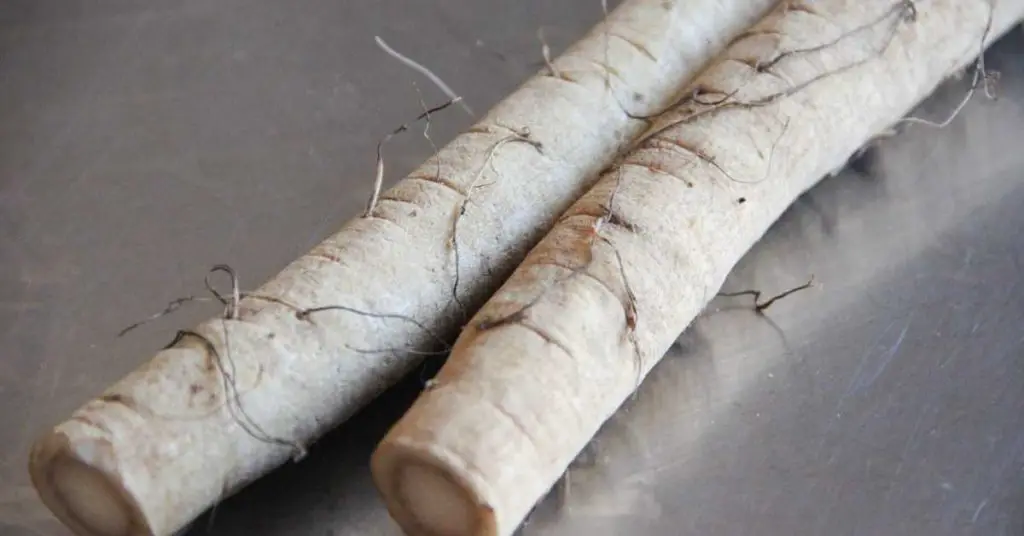
48. Fiddlehead Ferns (Matteuccia struthiopteris)
Fiddlehead ferns are harvested for their young, coiled fronds that resemble the scroll of a fiddle. They have a grassy, slightly nutty flavor and are often used in salads, sautéed, or pickled.
Fiddleheads are rich in antioxidants, omega-3 and omega-6 fatty acids. They are a great choice for gardeners with shady areas and those interested in foraging-type vegetables.
- USDA Hardiness Zone: 3-7
- Daylight Requirements: Partial to full shade
- Soil Needs: Moist, rich, acidic soil
- Mature Size: Up to 5 feet tall
- Container Growing: Yes, in large, moisture-retentive containers
- Growing Season: Early spring

49. Sea Kale (Crambe maritima)
Sea Kale is a perennial vegetable grown for its edible leaves, shoots, and flower buds, which have a flavor similar to asparagus when cooked. It’s high in vitamins and minerals, particularly vitamin C.
The plant is also ornamental, with attractive blue-green leaves and white flowers. Sea Kale is a unique and versatile plant, ideal for gardeners interested in perennial vegetables and ornamental edibles.
- USDA Hardiness Zone: 4-9
- Daylight Requirements: Full sun
- Soil Needs: Well-drained, fertile soil
- Mature Size: Up to 3 feet tall
- Container Growing: Yes
- Growing Season: Plant in early spring, harvest in late spring to early summer
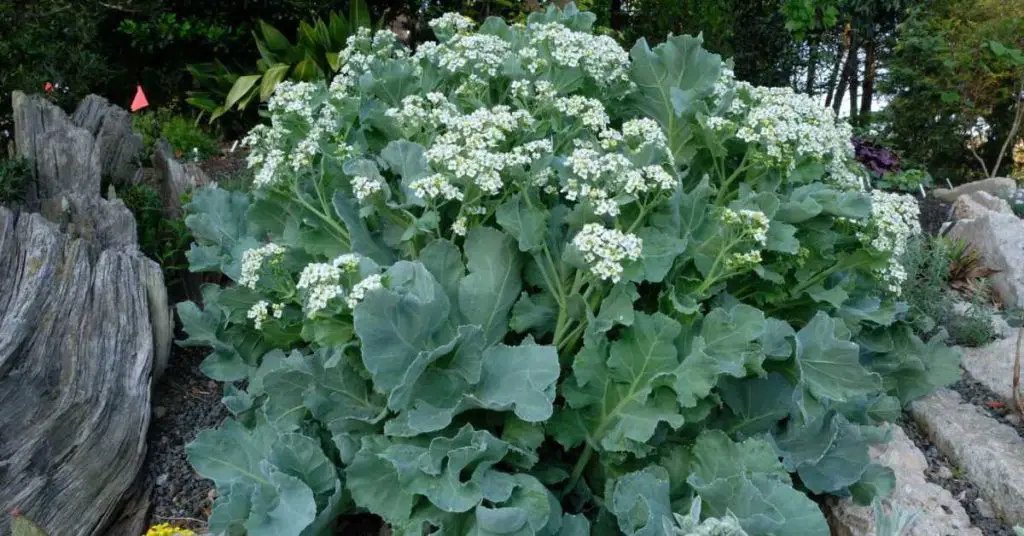
50. Perennial Purple Tree Collard (Brassica oleracea)
Purple Tree Collard is a perennial variety of collard greens with a rich, sweet flavor, enhanced by cold temperatures. The leaves are purple-tinged and highly nutritious, packed with vitamins and minerals.
This plant is ideal for gardeners who want a continuous supply of leafy greens without replanting each year. It’s also ornamental, with its striking purple leaves and tall stature.
- USDA Hardiness Zone: 8-11
- Daylight Requirements: Full sun to partial shade
- Soil Needs: Well-drained, fertile soil
- Mature Size: Up to 6-8 feet tall
- Container Growing: Yes, in large containers
- Growing Season: Year-round in mild climates
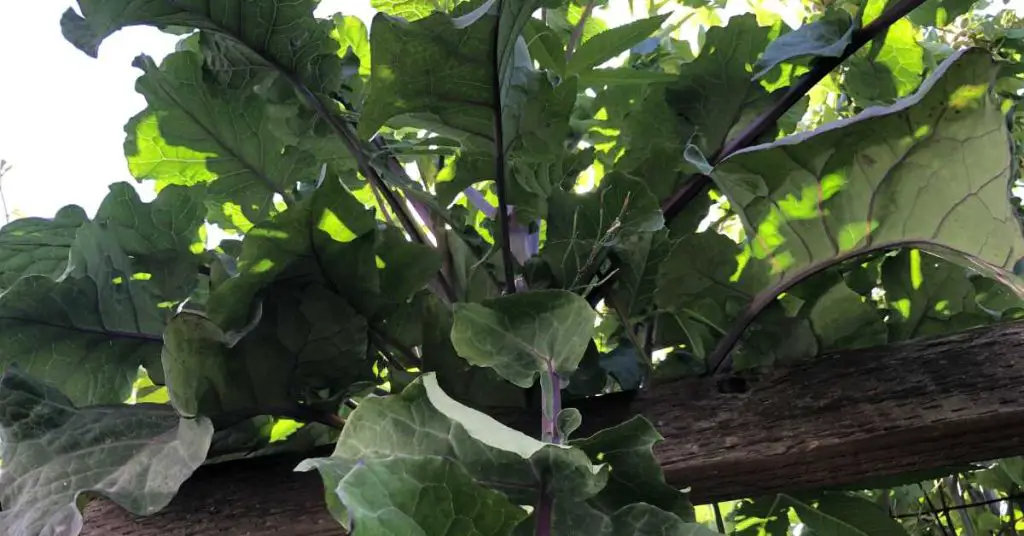
51. Fish Pepper (Capsicum annuum ‘Fish Pepper’)
The Fish Pepper is an African-American heirloom variety, traditionally used in seafood dishes. The peppers are uniquely variegated, as are the leaves of the plant, with fruits that mature from cream and green-striped to red.
They have a medium heat level and are perfect for adding both color and spice to dishes.
- USDA Hardiness Zone: 9-11
- Daylight Requirements: Full sun
- Soil Needs: Well-drained, fertile soil
- Mature Size: Up to 2 feet tall
- Container Growing: Yes
- Growing Season: Warm months
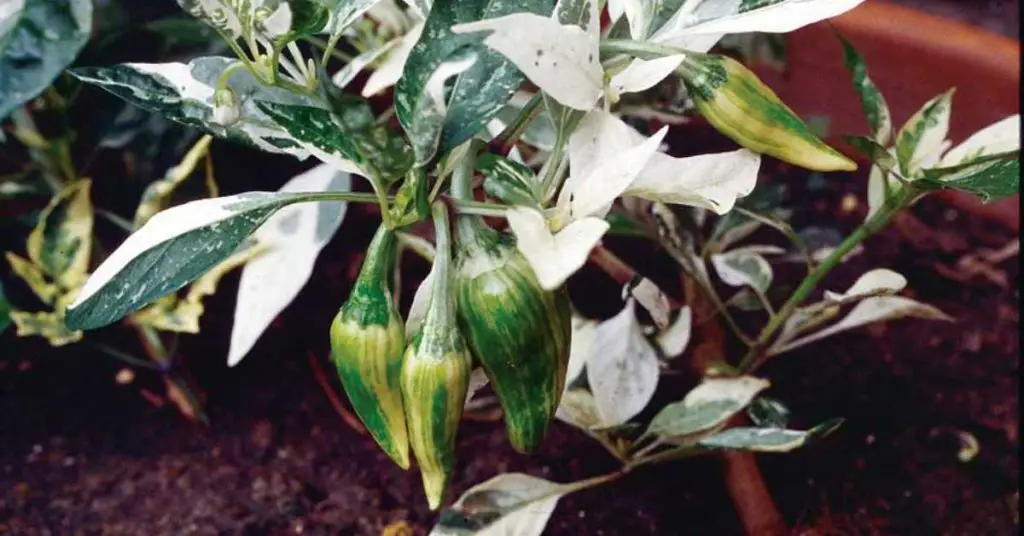
52. Longevity Spinach (Gynura procumbens)
Longevity Spinach is a nutrient-rich, leafy green known for its potential health benefits, including blood sugar regulation. It has a mild, slightly sweet flavor and can be eaten raw or cooked.
This fast-growing plant is a great addition to gardens where continuous harvesting of greens is desired. It’s particularly suited for warm, humid climates.
- USDA Hardiness Zone: 9-11
- Daylight Requirements: Partial shade
- Soil Needs: Well-drained, fertile soil
- Mature Size: Up to 2 feet tall and wide
- Container Growing: Yes
- Growing Season: Warm months, perennial in tropical climates
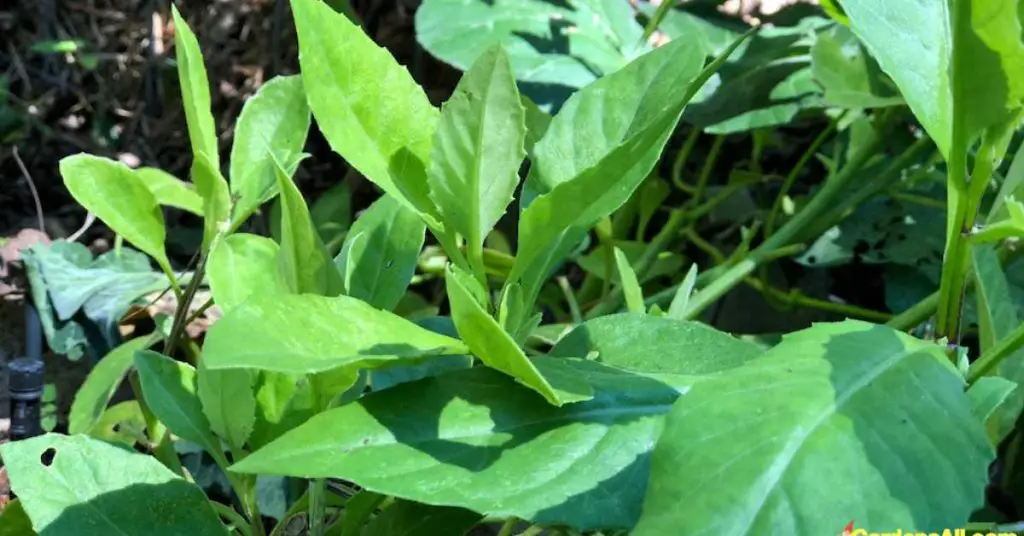
53. Okinawan Spinach (Gynura crepioides)
Okinawan Spinach is a dense, low-growing plant with green and purple leaves. It’s known for its health benefits, including cholesterol-lowering properties.
The leaves have a crunchy texture and a flavor similar to spinach, perfect for salads and cooked dishes. This plant is a great choice for those looking to add both color and nutrition to their garden.
- USDA Hardiness Zone: 9-11
- Daylight Requirements: Full sun to partial shade
- Soil Needs: Well-drained, fertile soil
- Mature Size: Up to 2 feet tall
- Container Growing: Yes
- Growing Season: Warm months, perennial in tropical climates
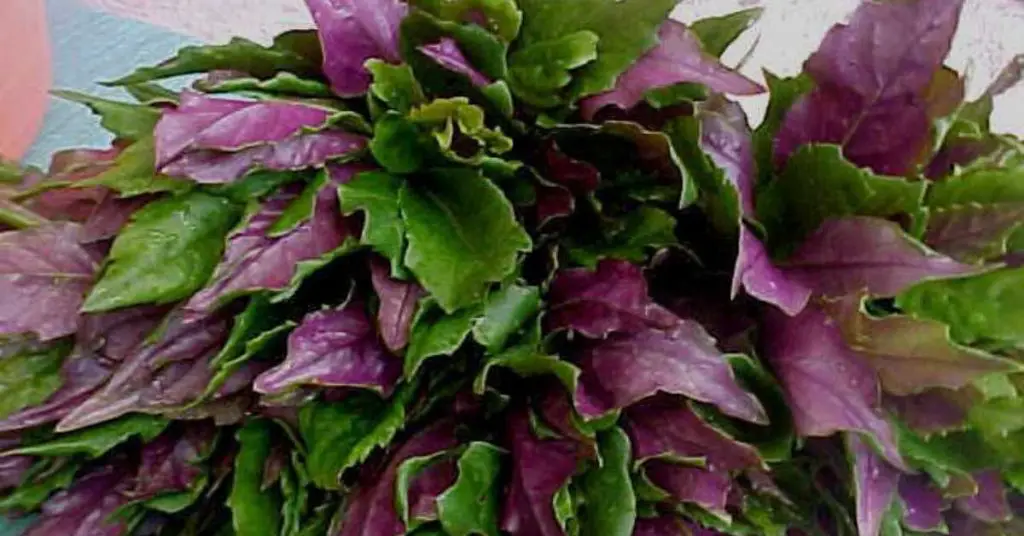
54. Perpetual Spinach (Beta vulgaris subsp. vulgaris)
Perpetual Spinach is not true spinach but a type of chard that closely resembles and tastes like spinach. It’s extremely easy to grow and provides a steady supply of greens throughout the season.
High in vitamins and minerals, it’s a great addition to any garden for those looking for a low-maintenance, versatile leafy green.
- USDA Hardiness Zone: 2-9
- Daylight Requirements: Full sun to partial shade
- Soil Needs: Well-drained, fertile soil
- Mature Size: Up to 2 feet tall
- Container Growing: Yes
- Growing Season: Cool months, can last several years
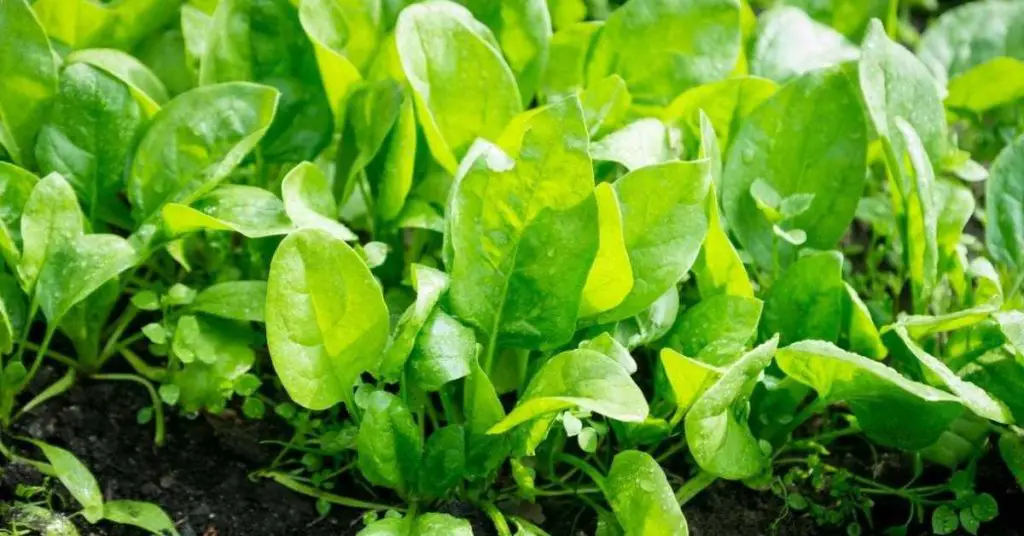
55. Walking Stick Kale (Brassica oleracea longata)
Walking Stick Kale is known for its tall, sturdy stems and edible leaves. The leaves can be harvested for culinary use, and the stem, when dried, can be varnished and used as a walking stick.
It’s a unique and dual-purpose plant, providing both food and a novelty item. It’s rich in vitamins and minerals, especially vitamins A, C, and K.
- USDA Hardiness Zone: 7-9
- Daylight Requirements: Full sun to partial shade
- Soil Needs: Well-drained, fertile soil
- Mature Size: Up to 6 feet tall
- Container Growing: Yes, in large containers
- Growing Season: Cool months
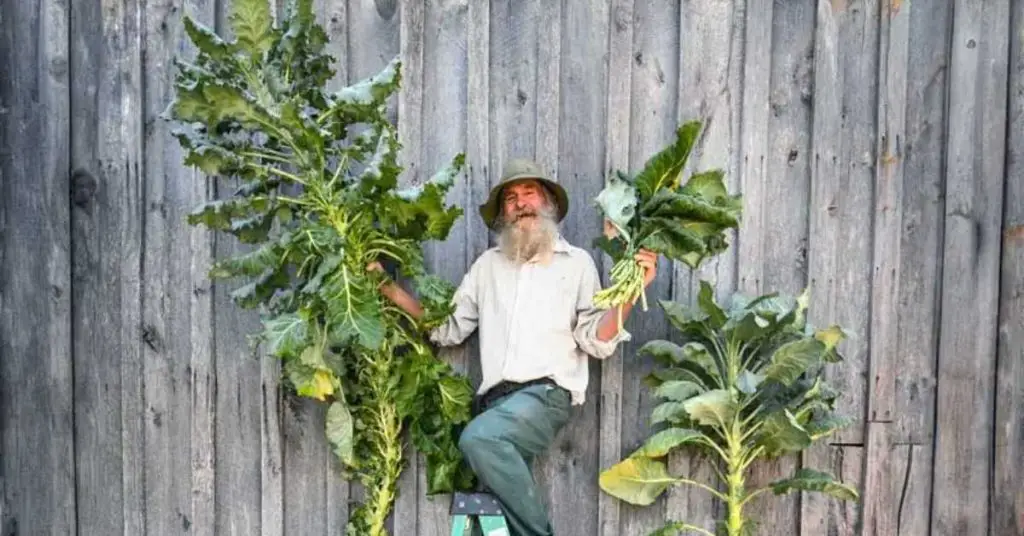
56. Culantro (Eryngium foetidum)
Culantro, not to be confused with cilantro, is a herb with a similar but more intense flavor. It’s commonly used in Caribbean, Latin American, and Asian cuisines.
The plant is relatively easy to grow and thrives in hot, humid conditions. It’s a great choice for gardeners looking to add robust flavor to their culinary herbs collection.
- USDA Hardiness Zone: 8-11
- Daylight Requirements: Partial shade
- Soil Needs: Well-drained, fertile soil
- Mature Size: Up to 1 foot tall
- Container Growing: Yes
- Growing Season: Warm months
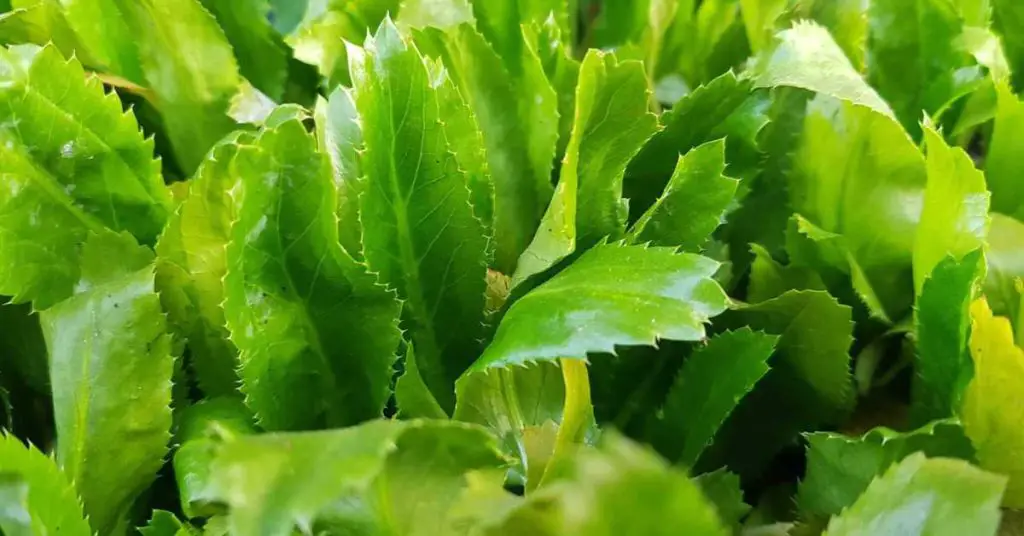
57. Moringa (Moringa oleifera)
Moringa, also known as drumstick tree, is celebrated for its highly nutritious leaves, flowers, and seed pods. It’s rich in vitamins, minerals, and protein.
The leaves can be used in salads, soups, and teas. Moringa is drought-resistant and grows rapidly, making it a valuable plant in regions with poor soil and dry conditions.
- USDA Hardiness Zone: 9-11
- Daylight Requirements: Full sun
- Soil Needs: Well-drained, dry soil
- Mature Size: Up to 20 feet tall
- Container Growing: Yes, but growth will be limited
- Growing Season: Warm months, perennial in tropical climates
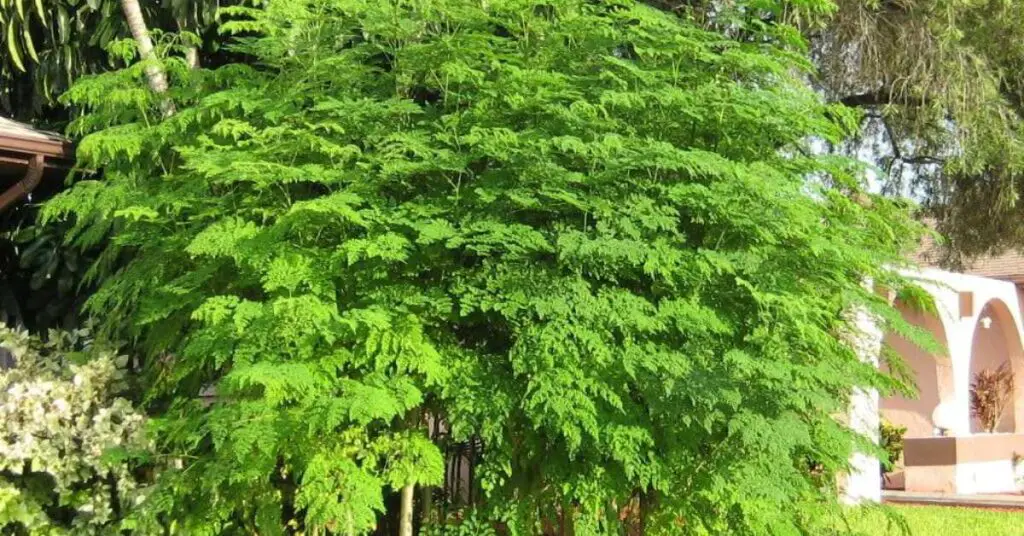
58. Ginger (Zingiber officinale)
Ginger is widely known for its culinary and medicinal uses. The rhizomes can be harvested for use in cooking, teas, and remedies.
Ginger requires warm, humid conditions and consistent moisture, making it well-suited for greenhouse or indoor growing in cooler climates.
- USDA Hardiness Zone: 9-12
- Daylight Requirements: Partial shade
- Soil Needs: Rich, well-drained, moist soil
- Mature Size: Up to 3 feet tall
- Container Growing: Yes
- Growing Season: Warm months
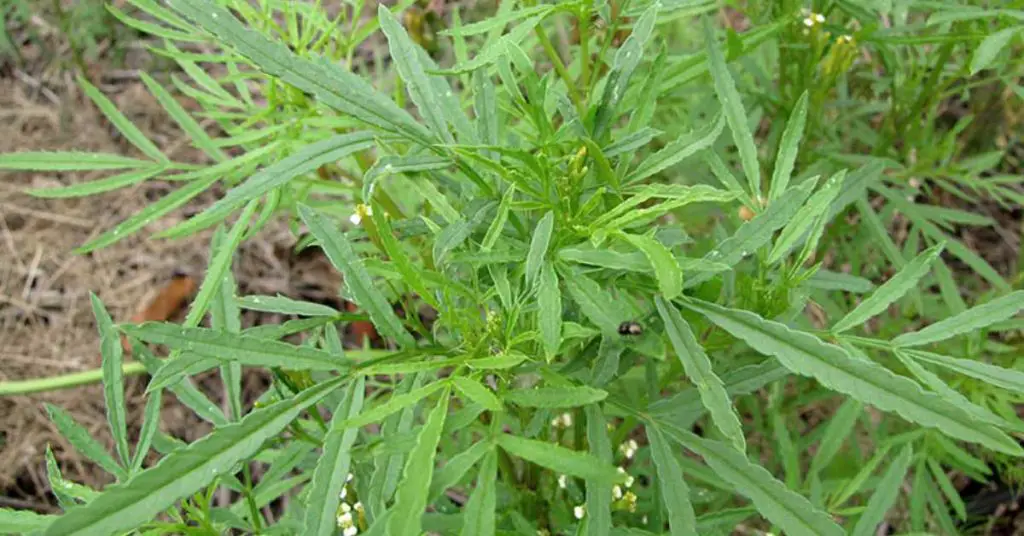
59. Turmeric (Curcuma longa)
Turmeric is valued for its flavorful and medicinal rhizomes, widely used in cooking and as a health supplement. It has anti-inflammatory and antioxidant properties.
The plant requires warm, humid conditions and can be grown outdoors in summer or indoors as a container plant.
- USDA Hardiness Zone: 8-11
- Daylight Requirements: Partial shade
- Soil Needs: Well-drained, fertile soil
- Mature Size: Up to 3 feet tall
- Container Growing: Yes
- Growing Season: Warm months
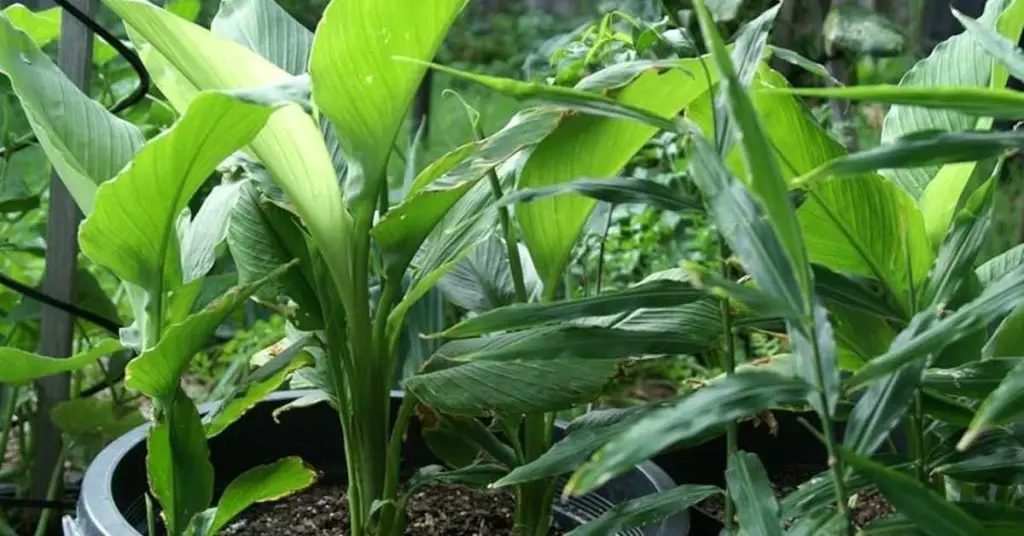
60. African Blue Basil (Ocimum kilimandscharicum × basilicum ‘Dark Opal’)
African Blue Basil is a perennial basil variety known for its striking purple-veined leaves and a strong, camphor-like scent. Its flowers are edible and attractive to pollinators.
This basil variety is more robust and longer-lasting than traditional basil, making it a great addition for continuous harvesting.
- USDA Hardiness Zone: 9-11
- Daylight Requirements: Full sun
- Soil Needs: Well-drained, fertile soil
- Mature Size: Up to 3 feet tall
- Container Growing: Yes
- Growing Season: Warm months
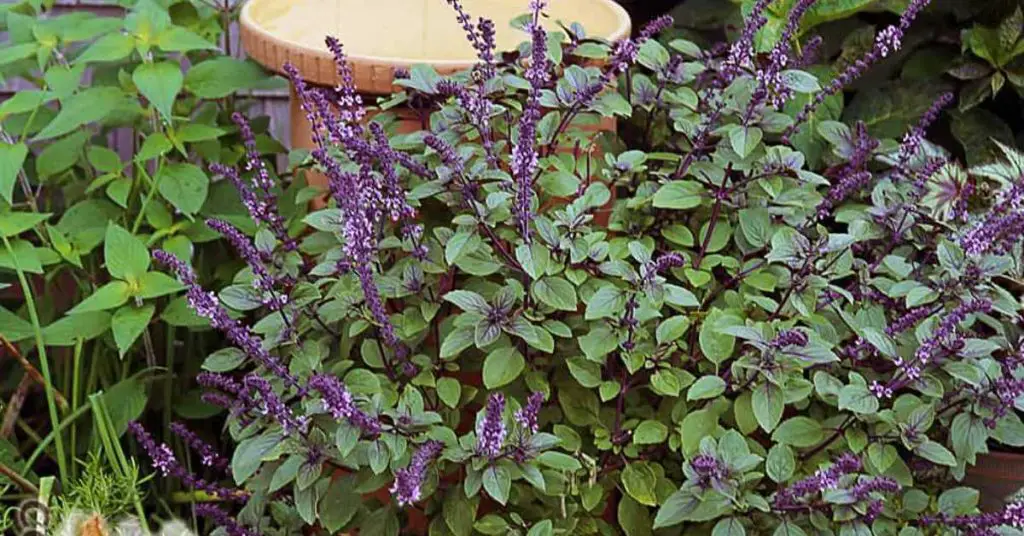
61. Miner’s Lettuce (Claytonia perfoliata)
Miner’s lettuce is a North American native plant, known for its tender, mild-tasting leaves and small white flowers. It’s high in vitamin C and can be used as a salad green or spinach substitute.
This plant is easy to grow and can thrive in shady, moist areas where other vegetables might struggle.
- USDA Hardiness Zone: 5-9
- Daylight Requirements: Partial shade
- Soil Needs: Moist, well-drained soil
- Mature Size: Up to 15 inches tall
- Container Growing: Yes
- Growing Season: Cool months, plant in early spring or fall
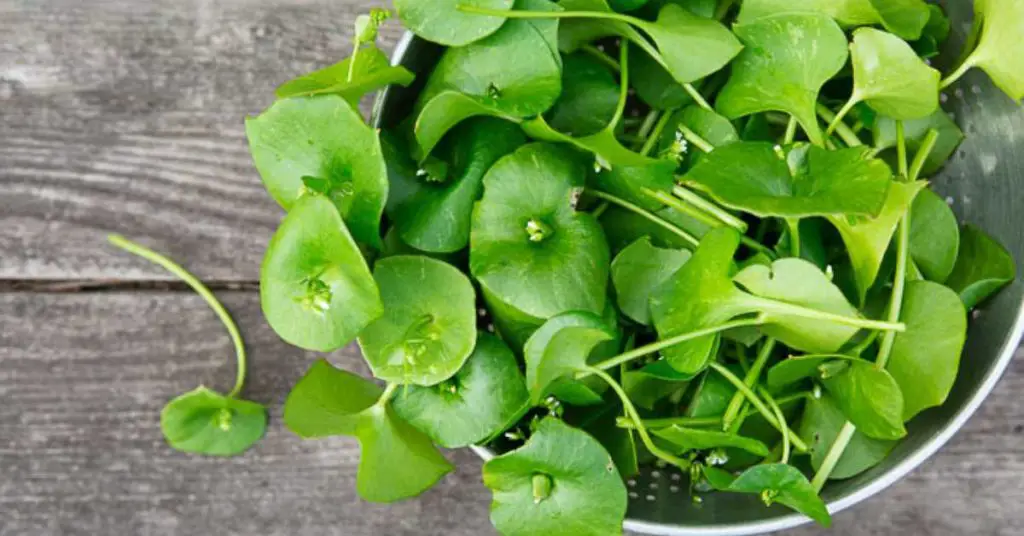
62. Huacatay (Tagetes minuta)
- USDA Hardiness Zone: 9-11
- Daylight Requirements: Full sun
- Soil Needs: Well-drained, fertile soil
- Mature Size: Up to 6 feet tall
- Container Growing: Yes
- Growing Season: Warm months
Huacatay, also known as Peruvian black mint, Stinking Roger (in Australia), is an aromatic herb commonly used in South American cuisine. Its flavor is a mix of basil, tarragon, and mint.
It’s used in traditional dishes like Peruvian green sauce and can be brewed as a medicinal tea. This plant is ideal for adventurous gardeners looking to explore South American flavors and herbs.
63. Chinese 5-Color Pepper (Capsicum annuum)
The Chinese 5-Color Pepper is an ornamental yet edible hot pepper that changes color from purple to cream, yellow, orange, and finally red.
Each stage has a different level of heat, making it not only visually striking but also versatile in the kitchen.
These peppers are perfect for adding spice to dishes and can be grown easily in containers.
- USDA Hardiness Zone: 9-11
- Daylight Requirements: Full sun
- Soil Needs: Well-drained, fertile soil
- Mature Size: Up to 2 feet tall
- Container Growing: Yes
- Growing Season: Warm months
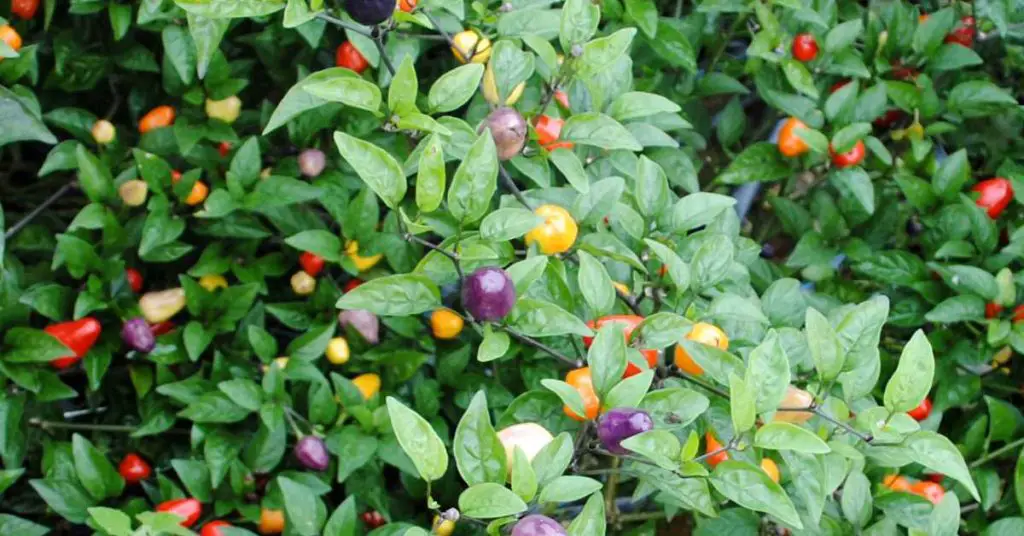
64. Egyptian Walking Onions (Allium × proliferum)
Egyptian Walking Onions are unique in that they produce bulbils at the top of the stem, which can take root and “walk” across the garden. They offer a strong onion flavor and can be used in cooking just like regular onions.
This plant is ideal for gardeners looking for an easy-to-grow, perennial onion variety that provides both visual interest and culinary use.
- USDA Hardiness Zone: 3-9
- Daylight Requirements: Full sun
- Soil Needs: Well-drained, fertile soil
- Mature Size: Up to 3 feet tall
- Container Growing: Yes
- Growing Season: Spring through fall
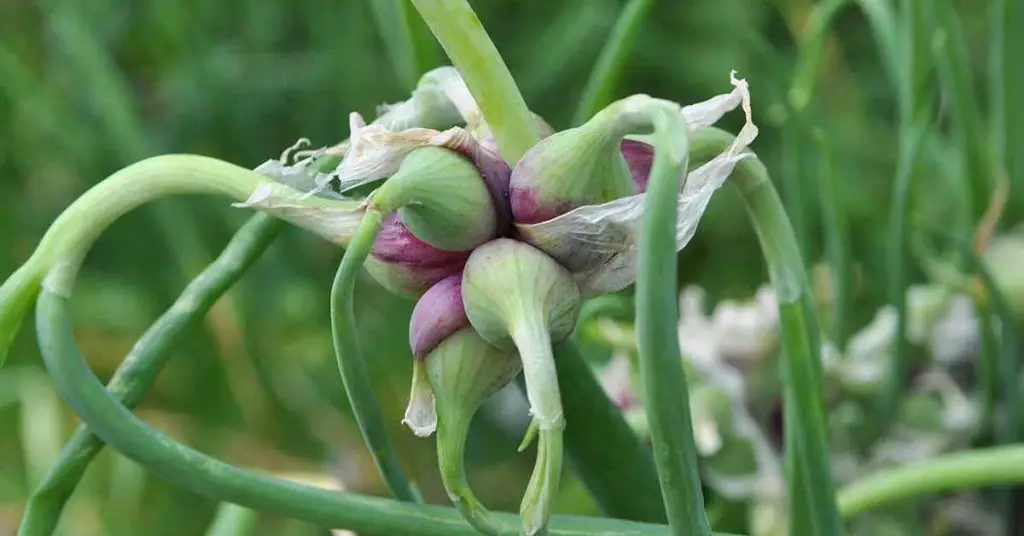
65. Pepino Melon (Solanum muricatum)
The Pepino Melon, also known as pepino dulce, produces sweet, melon-like fruits that are yellow with purple stripes. The flavor is a mix of honeydew and cucumber.
Rich in vitamins and antioxidants, it’s a great addition to fruit salads or eaten fresh. The Pepino Melon is ideal for gardeners in warmer climates or can be grown in containers in cooler areas if brought indoors during cold weather.
- USDA Hardiness Zone: 9-11
- Daylight Requirements: Full sun
- Soil Needs: Well-drained, fertile soil
- Mature Size: Up to 3 feet tall and wide
- Container Growing: Yes
- Growing Season: Warm months
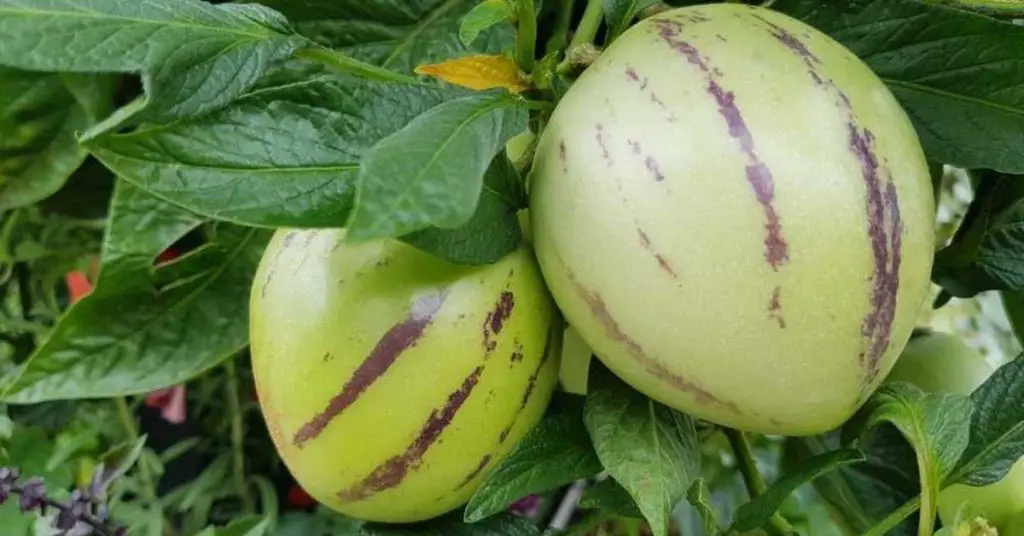
67. Good King Henry (Chenopodium bonus-henricus)
Good King Henry, also known as poor man’s asparagus, is a traditional perennial vegetable. The young shoots are eaten like asparagus, while the leaves can be used like spinach.
This plant is an excellent choice for permaculture gardens and for those interested in self-sustaining crops.
- USDA Hardiness Zone: 3-9
- Daylight Requirements: Full sun to partial shade
- Soil Needs: Well-drained, fertile soil
- Mature Size: Up to 3 feet tall
- Container Growing: Yes
- Growing Season: Spring through fall
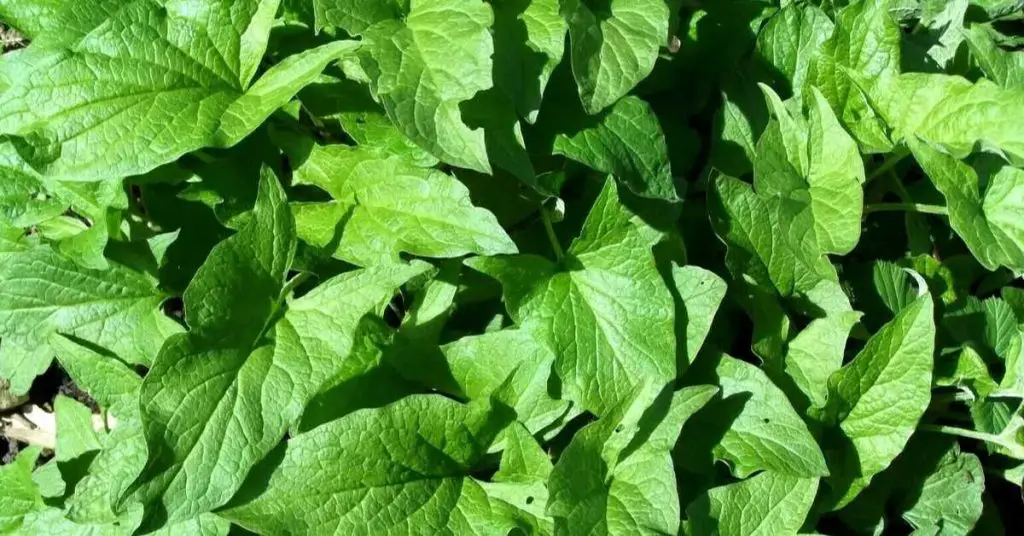
67. Lemon Drop Pepper (Capsicum baccatum ‘Lemon Drop’)
The Lemon Drop Pepper is a Peruvian variety known for its bright yellow, lemon-shaped peppers. They have a citrusy, spicy flavor and are often used in salsas and sauces.
This pepper is ideal for gardeners looking for a hot pepper with a distinct flavor profile.
- USDA Hardiness Zone: 9-11
- Daylight Requirements: Full sun
- Soil Needs: Well-drained, fertile soil
- Mature Size: Up to 3 feet tall
- Container Growing: Yes
- Growing Season: Warm months
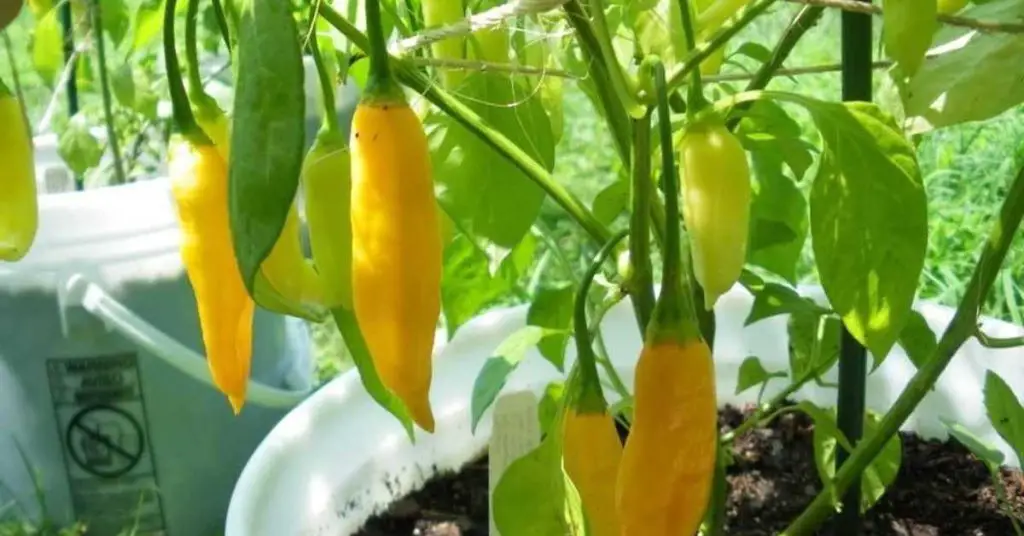
68. Tamarillo (Solanum betaceum)
Tamarillo, also known as tree tomato, produces egg-shaped fruits with a sweet and tangy flavor. They can be red, orange, or yellow.
Tamarillos are rich in vitamins and antioxidants and can be eaten fresh or used in cooking and baking. The plant has a fast growth rate and can be a striking addition to your garden.
- USDA Hardiness Zone: 10-11
- Daylight Requirements: Full sun to partial shade
- Soil Needs: Well-drained, fertile soil
- Mature Size: Up to 10-18 feet tall
- Container Growing: Yes, in large containers
- Growing Season: Warm months
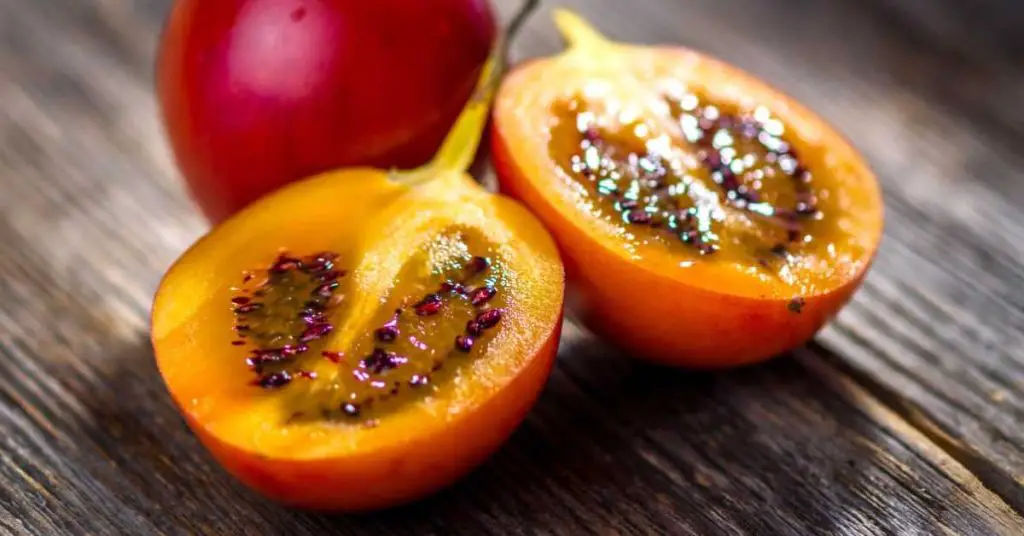
69. Bitter Melon (Momordica charantia)
Bitter Melon is known for its distinctive warty-looking fruits and sharp, bitter flavor. Popular in Asian and African cuisines, it’s used in various dishes and is noted for its medicinal properties.
The plant requires warm temperatures and a trellis or support for climbing.
- USDA Hardiness Zone: 10-12
- Daylight Requirements: Full sun
- Soil Needs: Well-drained, fertile soil
- Mature Size: Vines up to 13-16 feet long
- Container Growing: Yes, with support for climbing
- Growing Season: Warm months
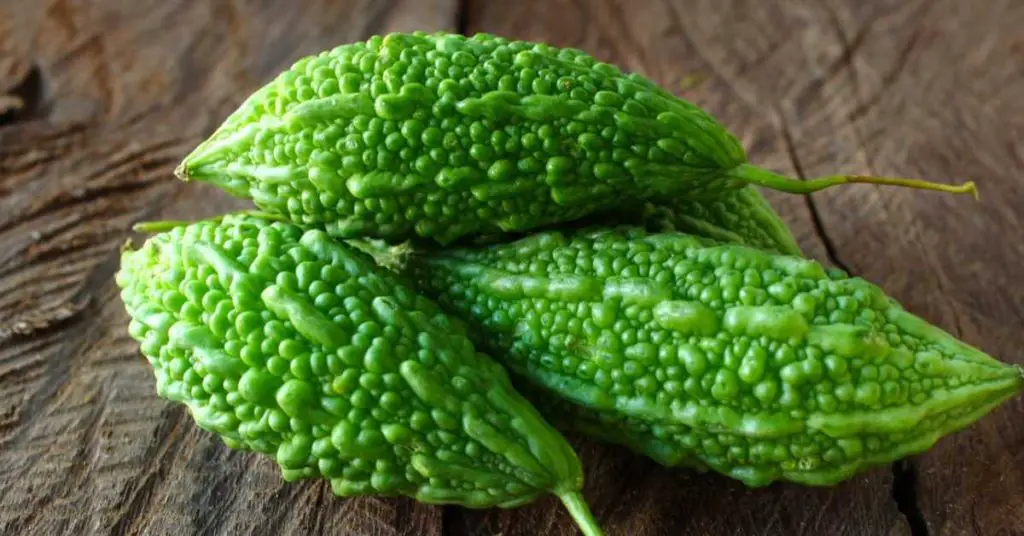
70. Goji Berry (Lycium barbarum)
Goji Berries, also known as wolfberries, are celebrated for their high nutrient and antioxidant content. The berries are small, red, and sweet, used fresh, dried, or in various dishes and teas.
The plant is tolerant of poor soil and drought, making it relatively easy to grow.
- USDA Hardiness Zone: 5-9
- Daylight Requirements: Full sun to partial shade
- Soil Needs: Well-drained, alkaline soil
- Mature Size: Up to 8-10 feet tall
- Container Growing: Yes
- Growing Season: Spring through fall
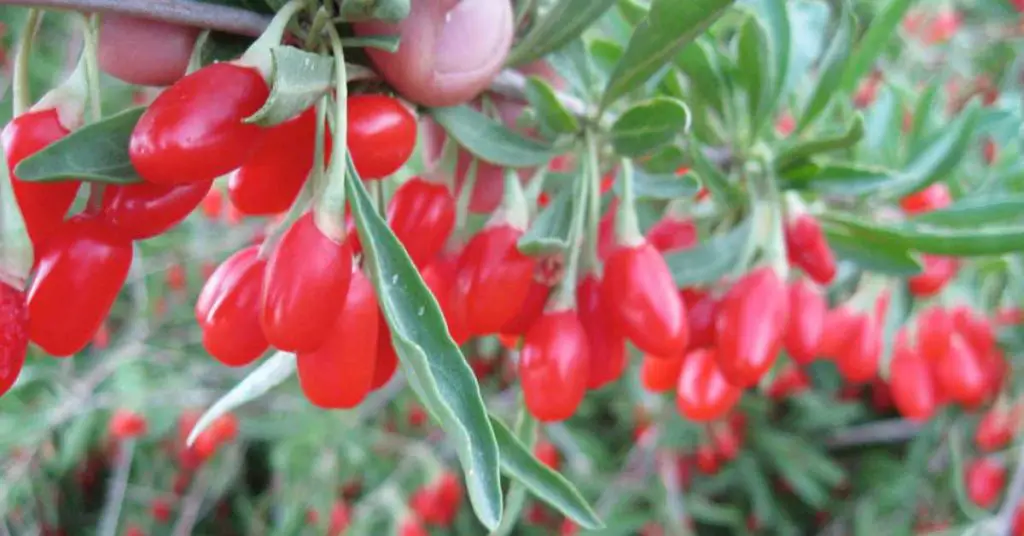
71. Armenian Cucumber (Cucumis melo var. flexuosus)
Armenian Cucumber, also known as snake cucumber, is actually a variety of melon. It has a long, slender shape and a crisp, mild flavor. It’s perfect for salads, pickling, or as a refreshing snack.
The plant is heat tolerant and can produce fruit that grows up to several feet in length. The cucumbers are great for juicing or eating fresh.
- USDA Hardiness Zone: 4-11
- Daylight Requirements: Full sun
- Soil Needs: Well-drained, fertile soil
- Mature Size: Vines can reach over 3-6 feet long
- Container Growing: Yes, with support for vines
- Growing Season: Warm months
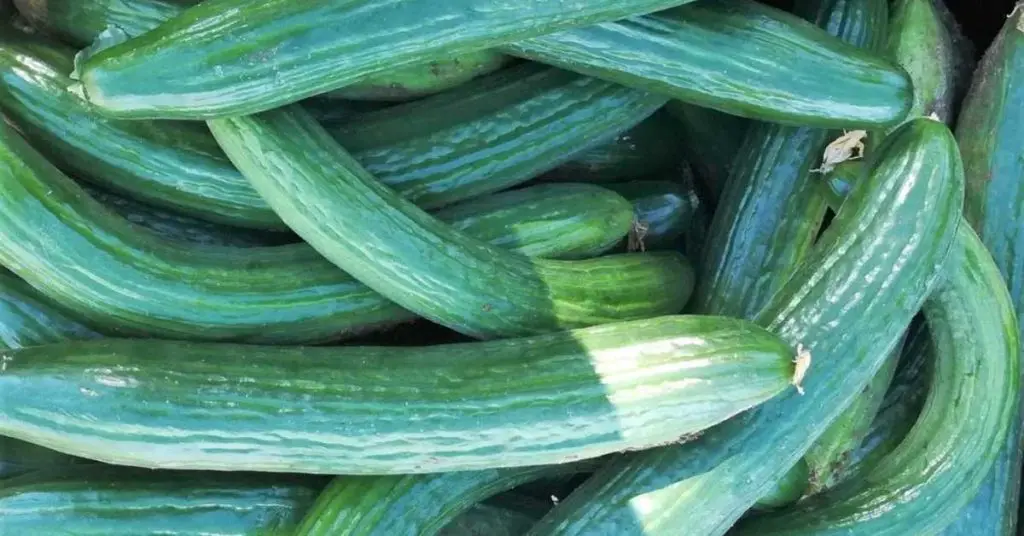
72. Watercress (Nasturtium officinale)
Watercress is a fast-growing, aquatic or semi-aquatic perennial known for its peppery-flavored leaves. It’s highly nutritious, rich in vitamins and minerals. Watercress is commonly used in salads, sandwiches, and as a garnish.
- USDA Hardiness Zone: 2-11
- Daylight Requirements: Partial shade
- Soil Needs: Constantly moist, nutrient-rich soil
- Mature Size: Up to 6-12 inches tall
- Container Growing: Yes, in water gardens or containers with consistent moisture
- Growing Season: Cool months
73. Egyptian Spinach (Corchorus olitorius)
Egyptian Spinach, also known as “molokhia,” is a highly nutritious leafy green with a slimy texture when cooked, similar to okra. It’s commonly used in soups and stews and is rich in vitamins, minerals, and antioxidants.
The plant is heat-tolerant and grows quickly, making it a great summer crop in warmer climates.
- USDA Hardiness Zone: 9-11
- Daylight Requirements: Full sun to partial shade
- Soil Needs: Well-drained, fertile soil
- Mature Size: Up to 2-4 feet tall
- Container Growing: Yes
- Growing Season: Warm months
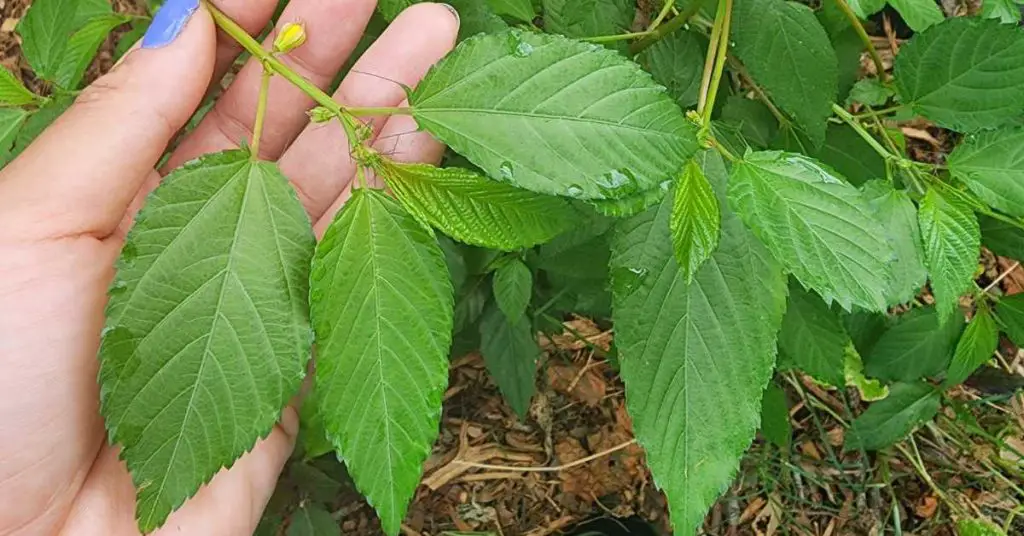
74. Dragonfruit (Hylocereus undatus)
Dragonfruit, or pitaya, is a cactus that produces stunningly beautiful fruits with a sweet, mildly tangy flavor. The fruits have a striking appearance with a bright pink or red skin and white or red flesh dotted with black seeds. The plant is an excellent choice for ornamental and edible landscaping.
- USDA Hardiness Zone: 10-11
- Daylight Requirements: Full sun to partial shade
- Soil Needs: Well-drained, sandy soil
- Mature Size: Vines can grow up to 20 feet long
- Container Growing: Yes, in large containers
- Growing Season: Warm months
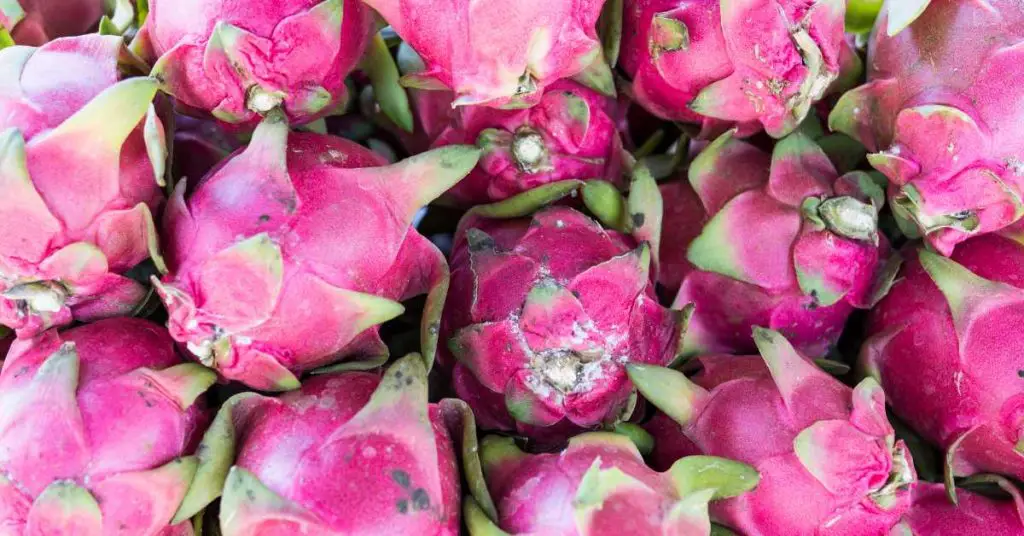
75. Yacon (Smallanthus sonchifolius)
Yacon is a root vegetable native to South America, known for its sweet, crunchy tubers that taste like a cross between an apple and a watermelon.
The leaves and stems are also edible. Yacon is high in fiber and prebiotics, making it beneficial for digestion.
- USDA Hardiness Zone: 7-11
- Daylight Requirements: Full sun to partial shade
- Soil Needs: Well-drained, fertile soil
- Mature Size: Up to 6-7 feet tall
- Container Growing: Yes, in large containers
- Growing Season: Warm months

76. Red Kuri Squash (Cucurbita maxima ‘Red Kuri’)
Red Kuri Squash is a winter squash with a teardrop shape and vibrant orange-red skin. It has a sweet, nutty flavor and smooth, creamy texture, perfect for soups, baking, and roasting.
The plant is a prolific producer and the squashes store well.
- USDA Hardiness Zone: 3-9
- Daylight Requirements: Full sun
- Soil Needs: Well-drained, fertile soil
- Mature Size: Vines up to 10-15 feet long
- Container Growing: Yes, in large containers
- Growing Season: Warm months

77. Sorrel (Rumex acetosa)
Sorrel is a perennial herb with a lemony flavor, used in salads, soups, and sauces. It’s rich in vitamins and minerals, particularly vitamin C. The plant is easy to grow and can be harvested continuously throughout the growing season.
- USDA Hardiness Zone: 3-7
- Daylight Requirements: Full sun to partial shade
- Soil Needs: Well-drained, fertile soil
- Mature Size: Up to 2 feet tall
- Container Growing: Yes
- Growing Season: Cool months
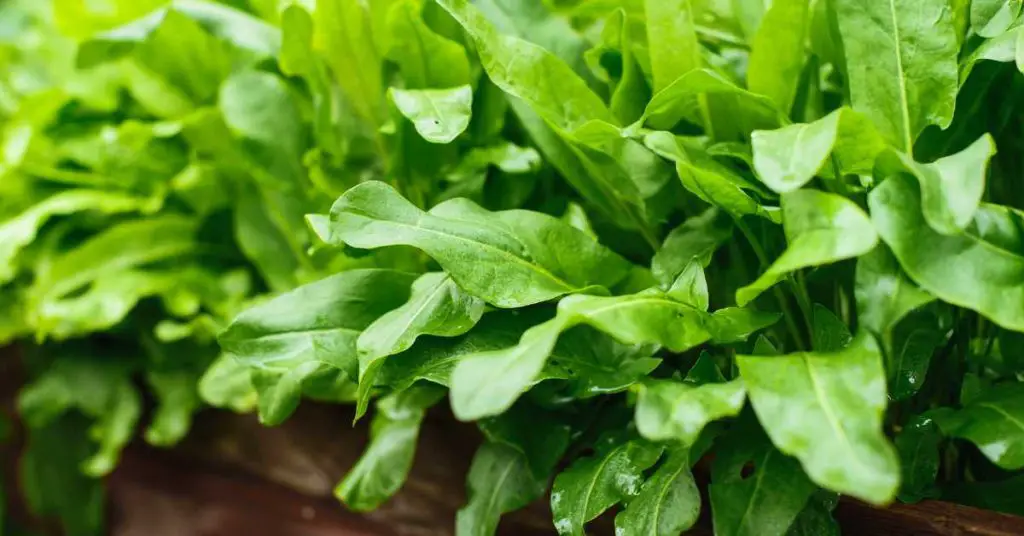
78. Mache (Valerianella locusta)
Mache, also known as corn salad or lamb’s lettuce, is a tender, mild green often used in salads. It’s rich in omega-3 fatty acids and vitamins. Mache is cold-hardy and can be one of the first greens to produce in spring.
- USDA Hardiness Zone: 5-9
- Daylight Requirements: Full sun to partial shade
- Soil Needs: Well-drained, fertile soil
- Mature Size: Up to 6 inches tall
- Container Growing: Yes
- Growing Season: Cool months
79. Nopales (Opuntia spp.)
Nopales are the edible pads of the prickly pear cactus, commonly used in Mexican cuisine. They have a slightly tart, green bean-like flavor and are often used in salads, scrambled eggs, and tacos.
Nopales are high in fiber, vitamins, and minerals. The cactus is drought-tolerant and can be an interesting and practical addition to xeriscape gardens.
- USDA Hardiness Zone: 8-11
- Daylight Requirements: Full sun
- Soil Needs: Well-drained, sandy soil
- Mature Size: Up to 4-6 feet tall
- Container Growing: Yes, in large containers
- Growing Season: Warm months
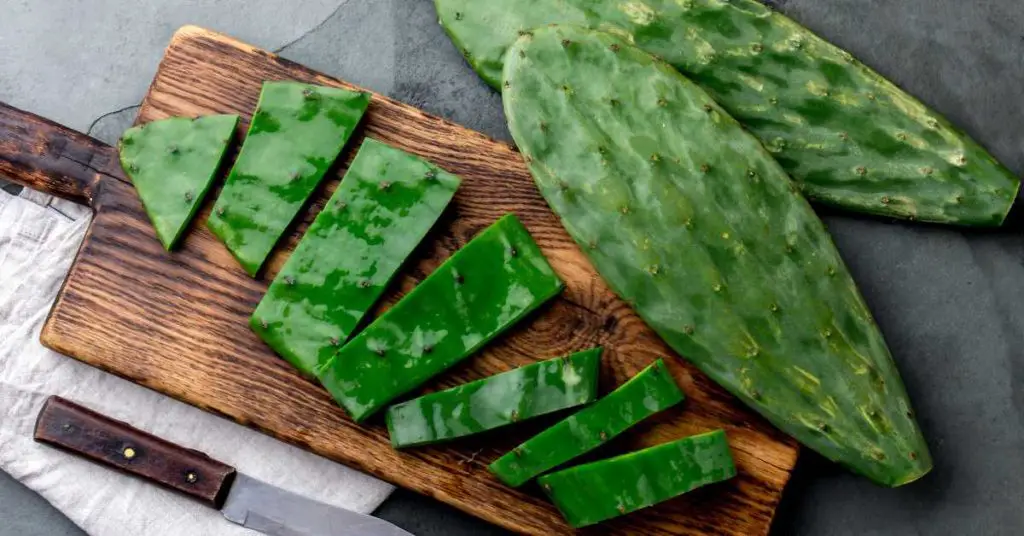
80. Tromboncino Squash (Cucurbita moschata ‘Tromboncino’)
Tromboncino Squash, also known as zucchetta, is an Italian squash variety that grows long, curved fruits with a light green color. The flesh is firm with a mild, nutty flavor, great for both culinary and decorative uses. The plant is vigorous and can be grown vertically to save space.
- USDA Hardiness Zone: 3-9
- Daylight Requirements: Full sun
- Soil Needs: Well-drained, fertile soil
- Mature Size: Vines can grow up to 10-15 feet long
- Container Growing: Yes, with adequate space and support for climbing
- Growing Season: Warm months

81. Purslane (Portulaca oleracea)
Purslane is a succulent, leafy green with a slightly sour and salty taste. It’s highly nutritious, rich in omega-3 fatty acids and antioxidants. Purslane can be used fresh in salads, sandwiches, or cooked like spinach. This plant is drought-tolerant and grows easily in poor soil.
- USDA Hardiness Zone: 2-11
- Daylight Requirements: Full sun to partial shade
- Soil Needs: Well-drained, sandy soil
- Mature Size: Up to 6 inches tall
- Container Growing: Yes
- Growing Season: Warm months

FAQs
What Soil Conditions Do Unique Edible Plants Prefer?
Unique edible plants often thrive in soil that is rich in organic matter, well-draining, and of a pH suitable to the plant’s specific needs. For example, blueberries require acidic soil (pH 4.5 to 5.5), while asparagus prefers a more neutral pH.
To prepare your garden, incorporate compost or aged manure to enrich the soil, and perform a soil test to determine pH levels and necessary adjustments.
Mulching around the plants can help retain moisture, suppress weeds, and regulate soil temperature, creating an ideal growing environment for your unique edibles.
How Much Sunlight Do These Plants Need?
Most unique edible plants require full sunlight, defined as at least six hours of direct sunlight per day, to thrive and produce a bountiful harvest.
However, some plants may tolerate or even prefer partial shade, especially in hotter climates. For instance, leafy greens like spinach and arugula can benefit from afternoon shade to prevent bolting (going to seed prematurely).
Assessing your garden’s sun exposure and choosing plants that match those conditions will ensure your unique edibles grow vigorously.
When Is the Best Time to Plant Unique Edible Plants?
The optimal planting time for unique edible plants depends on their native climates and specific growth requirements.
Generally, warm-season crops should be planted after the risk of frost has passed, while cool-season crops can be planted in early spring or late summer for a fall harvest.
Tropical plants, however, may require year-round warmth or indoor cultivation in temperate zones.
Always refer to the plant’s seed packet or nursery recommendations for precise planting times and consider using a calendar to schedule planting dates for a successful gardening season.
How Often Should I Water My Unique Edible Plants?
Watering frequency for unique edible plants varies based on the plant type, soil conditions, and weather. A general rule is to keep the soil consistently moist but not waterlogged.
Deep, infrequent watering encourages strong root development, whereas frequent, shallow watering may lead to shallow roots and weaker plants.
Some unique plants, such as succulents or drought-tolerant herbs, require less water, while others, like watermelons and cucumbers, have higher water needs.
Using a mulch can help retain soil moisture, reduce watering frequency, and provide a more consistent moisture level for your plants.
Do Unique Edible Plants Need Special Fertilizers?
While most unique edible plants will thrive with a balanced, all-purpose organic fertilizer, some may have specific nutritional needs.
For instance, plants with high nitrogen requirements, such as leafy greens, may benefit from a fertilizer higher in nitrogen content.
Conversely, root crops like carrots and beets may perform better with a phosphorus-rich fertilizer to encourage root development. Always read the fertilizer label and apply according to the manufacturer’s instructions.
Additionally, incorporating compost into your garden can provide a slow-release source of nutrients, benefiting a wide range of plants.
How Can I Protect My Unique Edible Plants from Pests and Diseases?
Protecting your unique edible plants from pests and diseases starts with preventive measures such as choosing disease-resistant varieties, ensuring proper plant spacing for air circulation, and rotating crops annually to prevent soil-borne diseases.
Encourage beneficial insects that prey on pests by planting flowers and herbs nearby. If pests or diseases do appear, identify them accurately and use targeted, organic pest control methods whenever possible.
Regularly inspecting your plants and acting quickly at the first sign of trouble can prevent minor issues from becoming major problems.
Can I Grow These Plants in Containers?
Many unique edible plants are well-suited to container gardening, offering flexibility for gardeners with limited space. When choosing containers, ensure they are large enough to accommodate the plant’s root system and have adequate drainage holes.
Use a high-quality potting mix designed for container gardening to ensure proper aeration and moisture retention. Regular watering and fertilization are especially important in containers, as plants can’t draw resources from the surrounding soil.
With the right care, container-grown plants can be just as productive as those in the ground.
What Are Some Common Challenges in Growing Unique Edible Plants, and How Can I Overcome Them?
Growing unique edible plants comes with its set of challenges, such as finding the right growing conditions and managing pests and diseases. Some plants may require extra attention to soil pH, moisture levels, or specific nutrients.
Researching your plants’ needs and monitoring your garden closely will allow you to address issues promptly. Don’t be discouraged by setbacks; every gardening season provides valuable lessons.
Joining a local gardening group or forum can also offer support and advice tailored to your specific climate and conditions.
How Can I Ensure a Bountiful Harvest from My Unique Edible Plants?
Ensuring a bountiful harvest from your unique edible plants involves consistent care and attention to their needs. This includes proper watering, fertilization, and pest and disease management.
Regular harvesting encourages many plants to produce more fruit or leaves, so don’t hesitate to pick your crops when they’re ready.
Companion planting can also boost your garden’s productivity by attracting beneficial insects and improving soil health.
With patience and persistence, you can enjoy a diverse and plentiful harvest from your unique edible garden.
Conclusion
As we wrap up our journey through the diverse and fascinating world of unique edible plants, it’s clear that the possibilities for enriching our gardens and palates are nearly boundless.
From the striking colors of purple carrots and the geometric beauty of Romanesco broccoli to the exotic flavors of kiwano and the nutritional powerhouse of oca tubers, each plant offers its own unique set of benefits, challenges, and joys.
Whether you’re a seasoned gardener looking to expand your horizons or a beginner eager to try something new, incorporating these unique edibles into your garden can transform it into a vibrant, living mosaic of tastes, textures, and colors.

